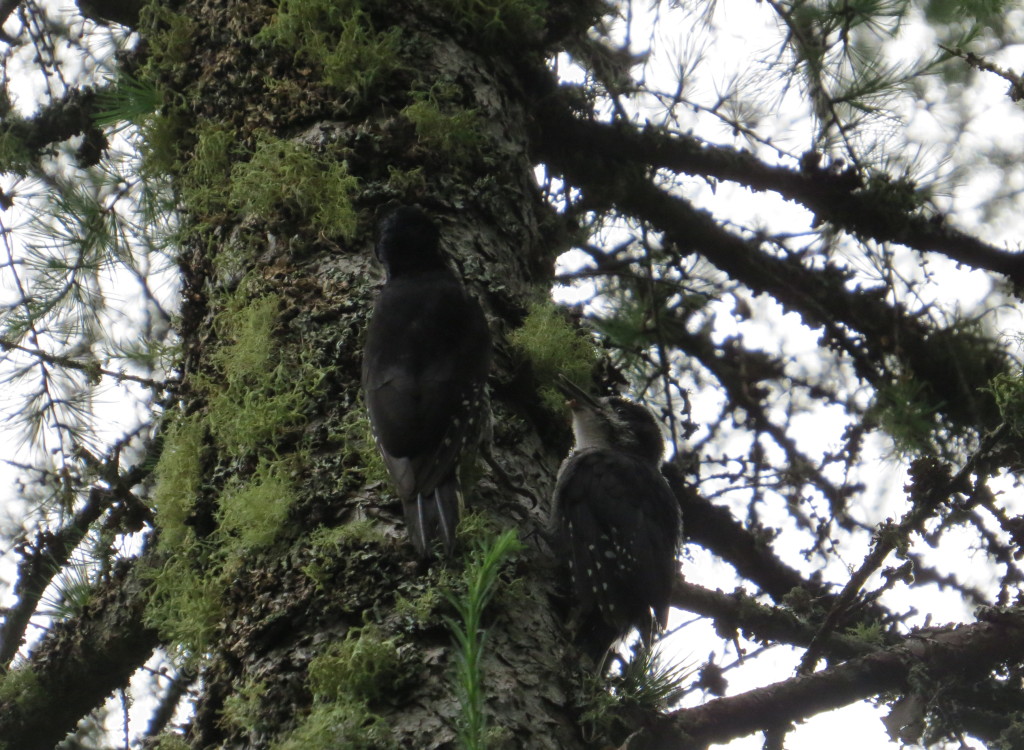So much for a summer of little birding and blogging. The good birds need to stop. At least there were some chases on which I put my foot down (and I don’t mean on the accelerator). One was a Yellow-breasted Chat–200 miles was just too far for a possible glimpse at a skulker. The other was a very interesting but bothersome find. Bruce Fall, the Minnesota state eBird reviewer, discovered a large, “yellow-bellied” Kingbird at Murphy Hanrehan Park Reserve in Savage. It was clear from the photos obtained by many birders that this was either a Tropical Kingbird or a Couch’s Kingbird and not the more expected Western Kingbird stray. The first two Kingbirds are practically identical visually speaking, so they can only safely be identified by voice when outside of their normal ranges of Arizona and Texas. One problem, though. This bird wasn’t talking for anybody. Either of these Kingbird species is a significant vagrant, but what fun is it to chase a bird that no one knows for sure what it is? I dismissed this one pretty quickly.
Anyhow, I was having a pretty good day birding around the county on the morning of June 30th without even thinking about that CO/TRKI. My day started by tracking down a county Lark Sparrow that Joel Schmidt had discovered in a gravel pit a couple days prior. I was stoked. I hadn’t seen one of these since my lifer two years ago, and now I had one for Kandiyohi County.
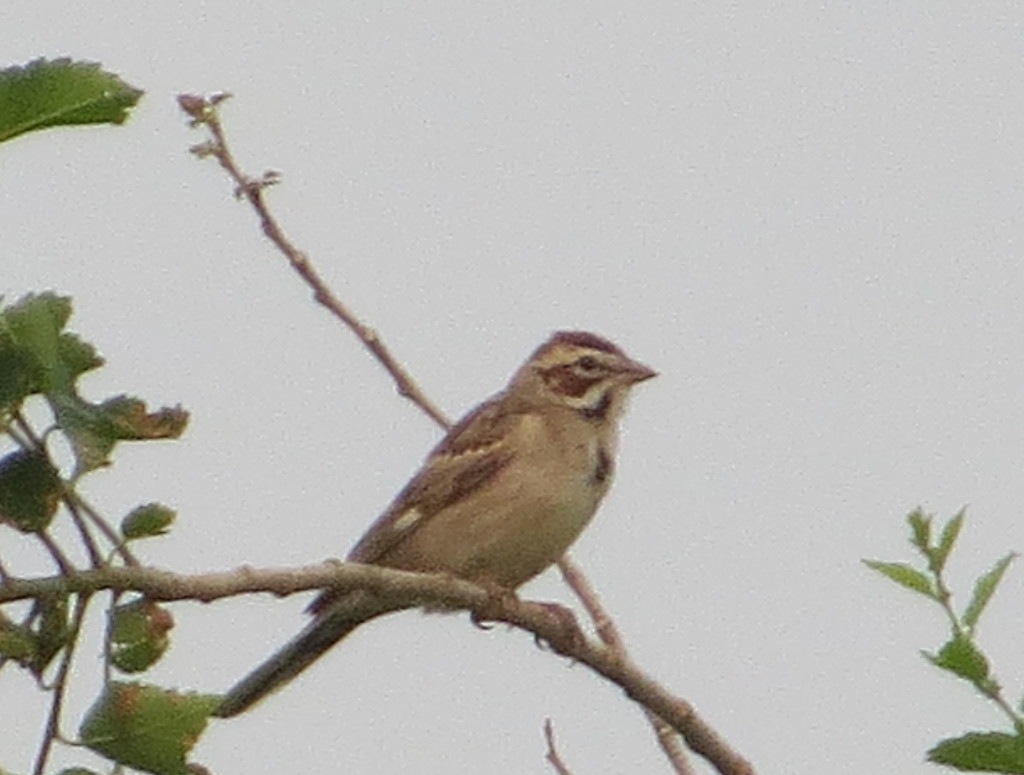
Even still, I wanted another bird for my county list that day, so after the LASP I went looking for some Red-necked Grebes that Joel Schmidt also found earlier in June. I struck out, but a pair of COLOs next to the road was a nice consolation prize.
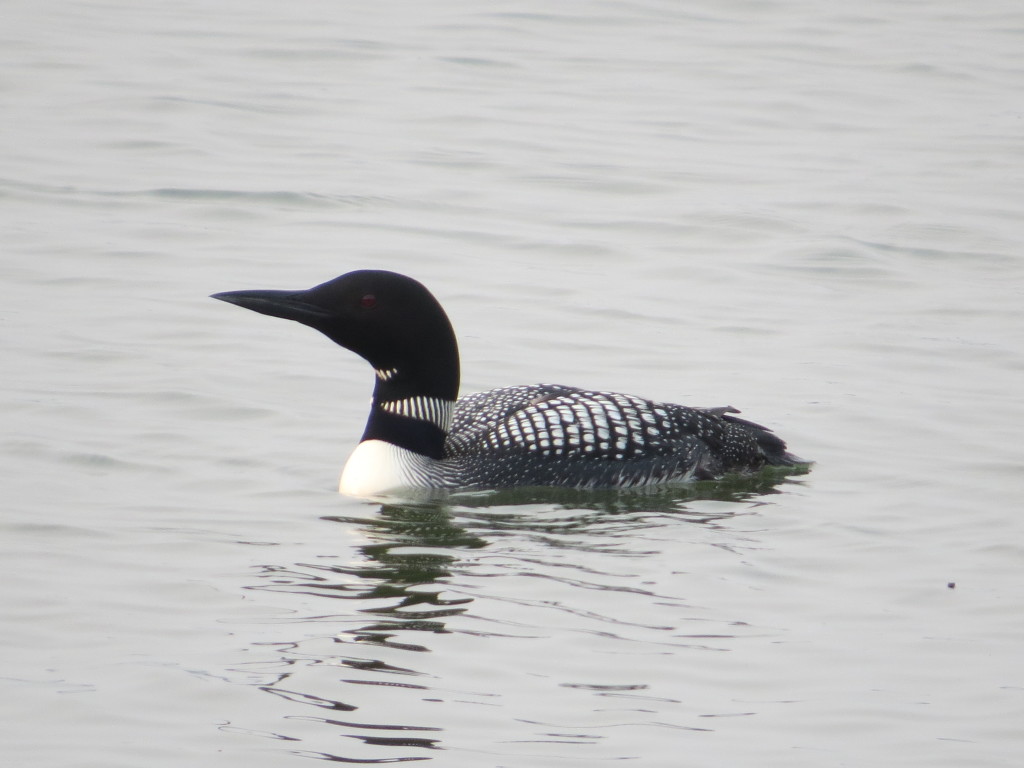 Hmmm…I wonder why they didn’t have a chick with them. It’s best not to think about that.
Hmmm…I wonder why they didn’t have a chick with them. It’s best not to think about that.
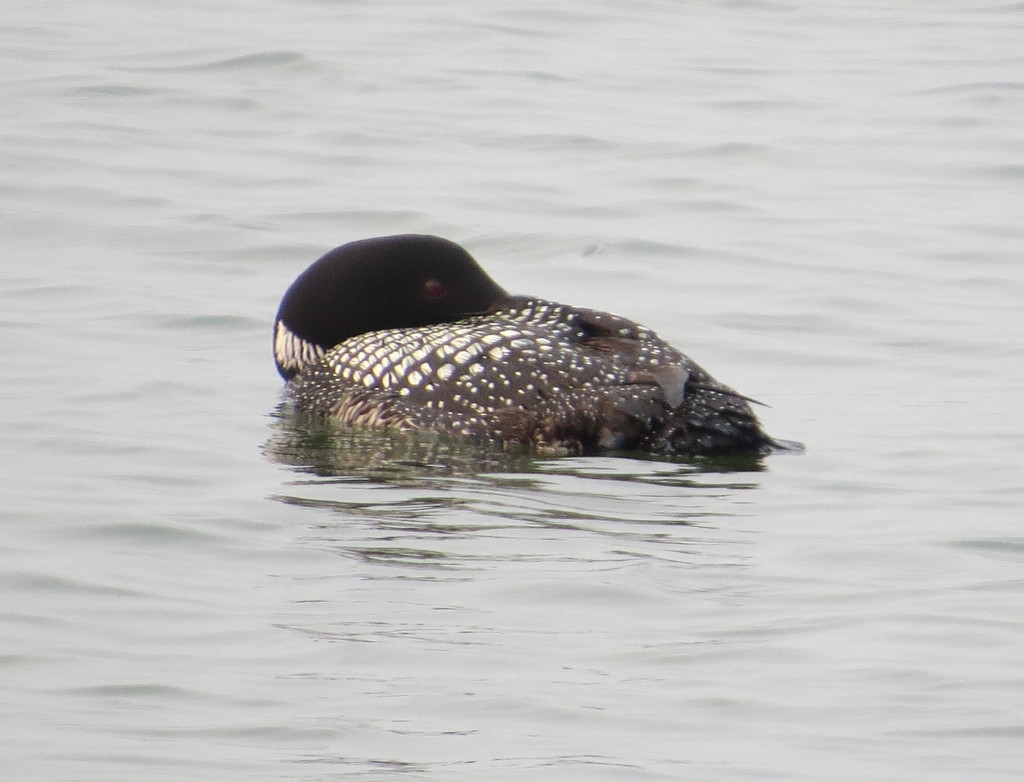 I got back to the house, happy with my morning, and was busy documenting my LASP sighting. Then an email came in that changed the course of my day. After nearly 15 hours of observing the mystery Kingbird over the course of a week, Bruce Fall clinched the ID after hearing the Kingbird vocalize when a Brown-headed Cowbird got too close for comfort. Tropical Kingbird. Holy smokes. This is a scarce bird in even the tiny corners of Arizona and Texas that it calls home. I told Melissa I would have to try to squeeze in a fast trip to the Cities to try for this one. This was a Minnesota first state record of a Tropical Kingbird after all.
I got back to the house, happy with my morning, and was busy documenting my LASP sighting. Then an email came in that changed the course of my day. After nearly 15 hours of observing the mystery Kingbird over the course of a week, Bruce Fall clinched the ID after hearing the Kingbird vocalize when a Brown-headed Cowbird got too close for comfort. Tropical Kingbird. Holy smokes. This is a scarce bird in even the tiny corners of Arizona and Texas that it calls home. I told Melissa I would have to try to squeeze in a fast trip to the Cities to try for this one. This was a Minnesota first state record of a Tropical Kingbird after all.
Melissa has apparently learned the skills of opportunism from watching me. Usually I find a way to see good birds on trips or other outings that are non-birding. This time Melissa was using this bird to get back to Ikea in Bloomington where she had been the day before. She had her eye on a loft bed for Evan and now saw an opportunity to go get it. Gee, a rare life bird and Swedish meatballs with lingonberry sauce? Yeah, I suppose we could go.
The four of us got to Murphy-Hanrehan about three hours after the decision was made. We hiked the 3/4 of a mile to trail marker 36, and the Tropical Kingbird was there right away. It stood out like a giant sore thumb in the dead branches of this tall, lone Cottonwood. It looked utterly massive in real life.
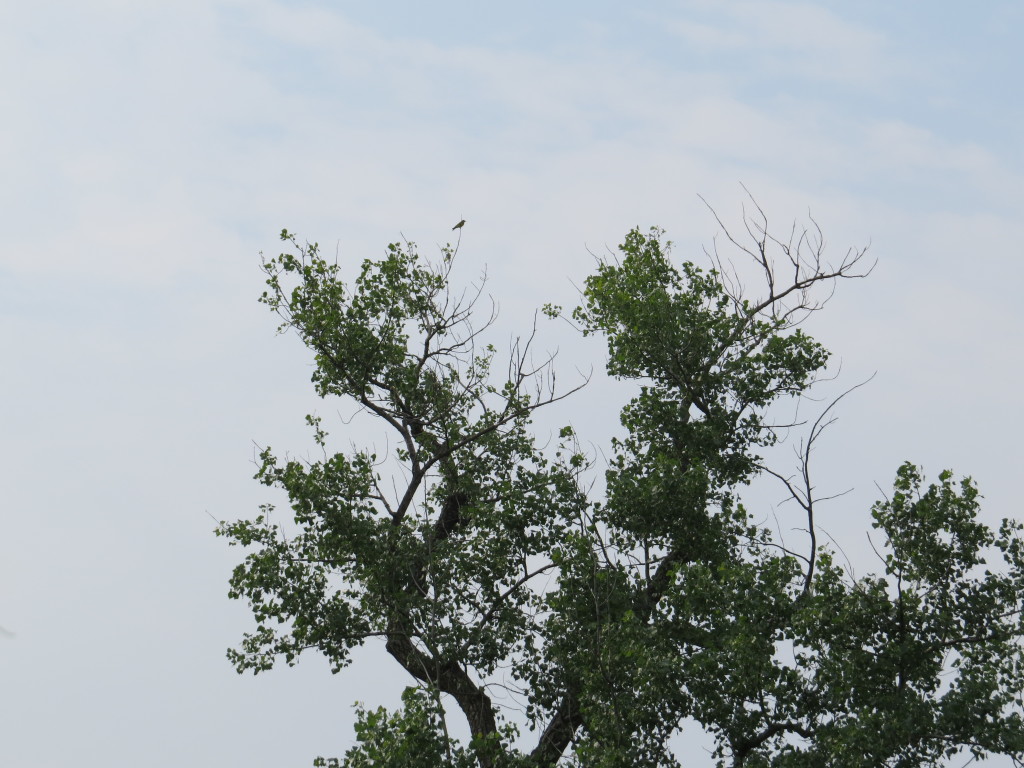
From this lone Cottonwood island that towered over the open fields below, this bird was King of his domain.
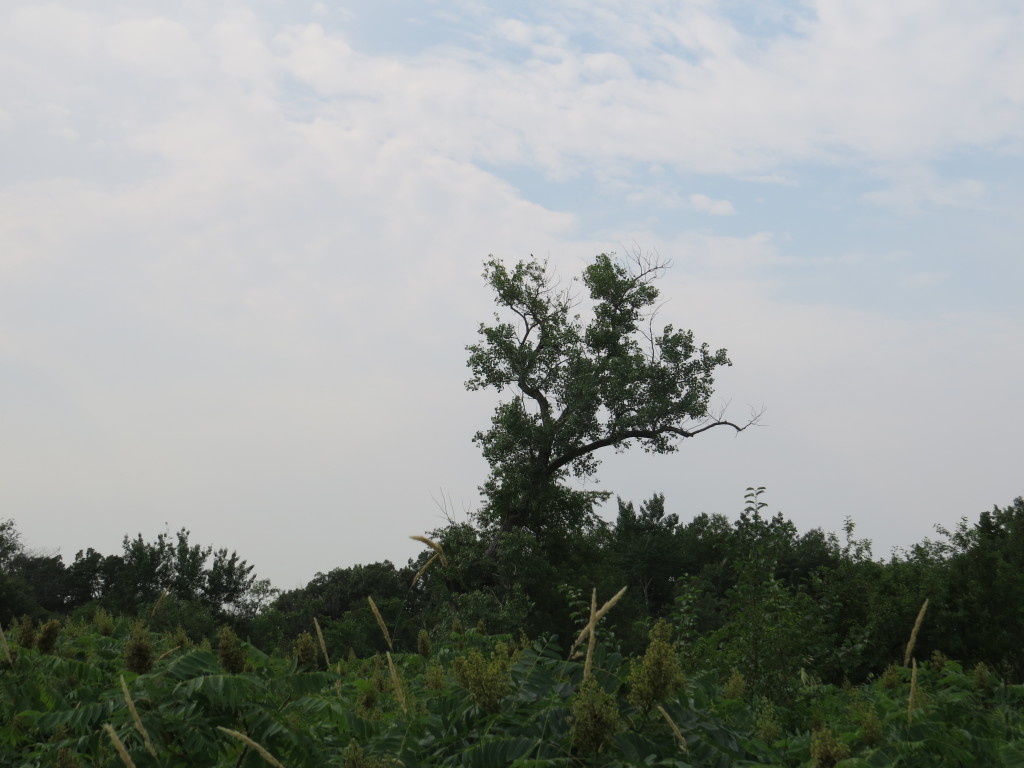
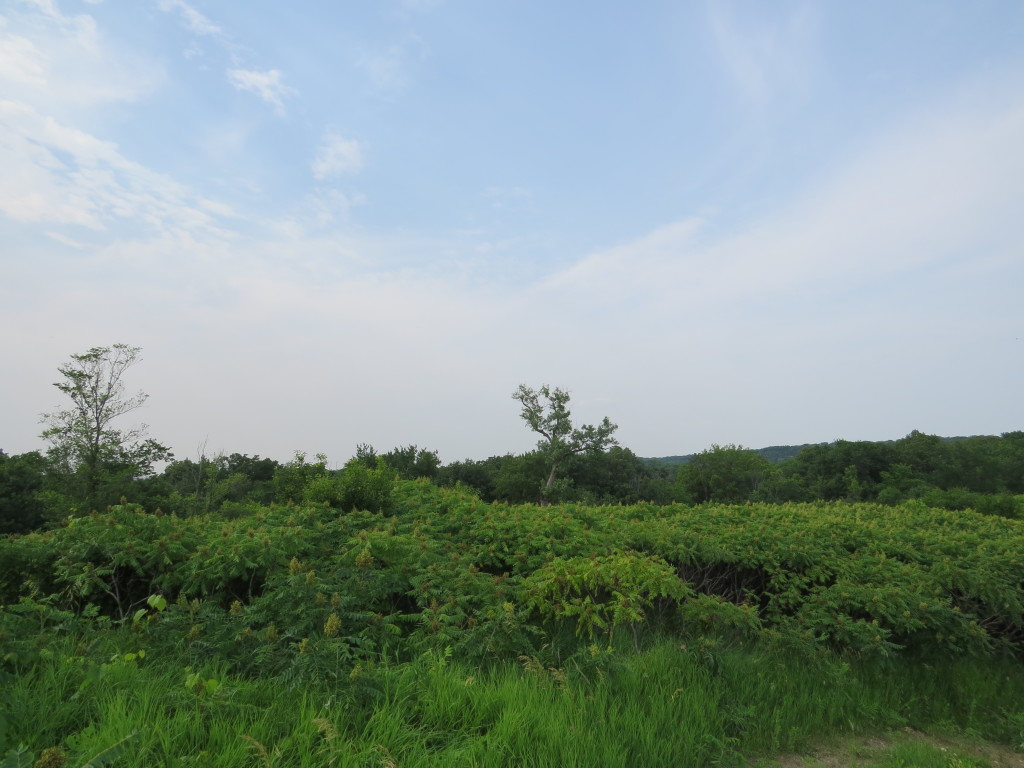 The bird was out there a ways, so I did the best I could for photos.
The bird was out there a ways, so I did the best I could for photos.
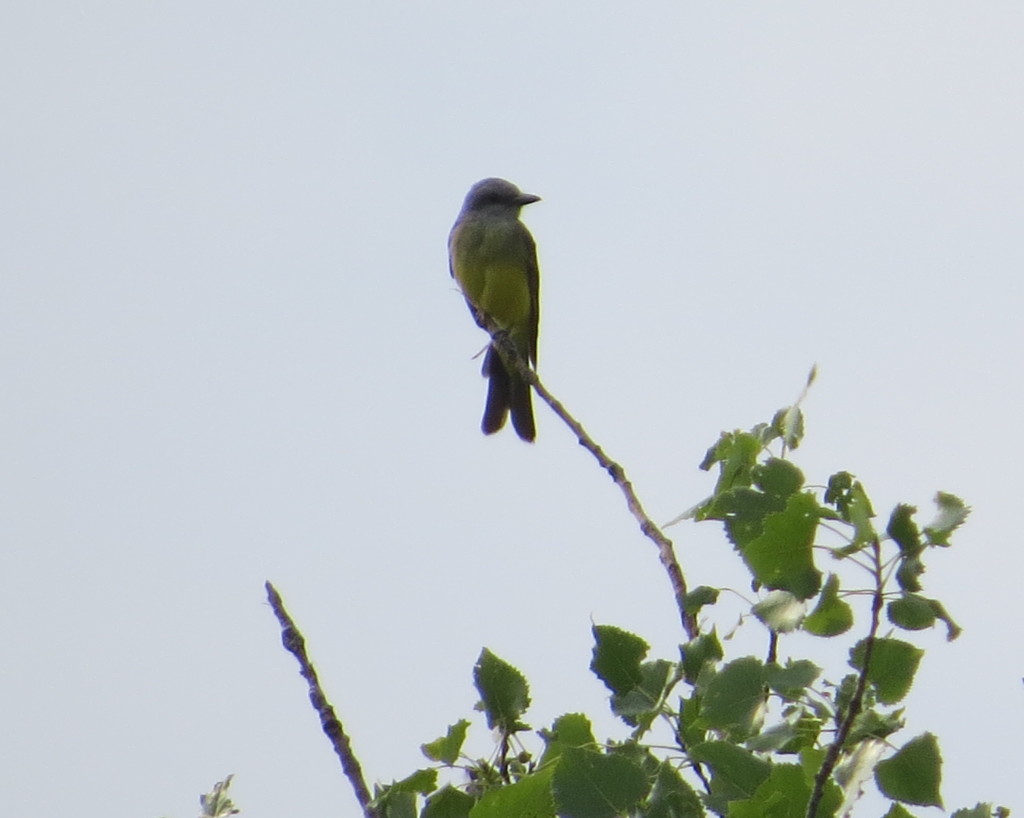
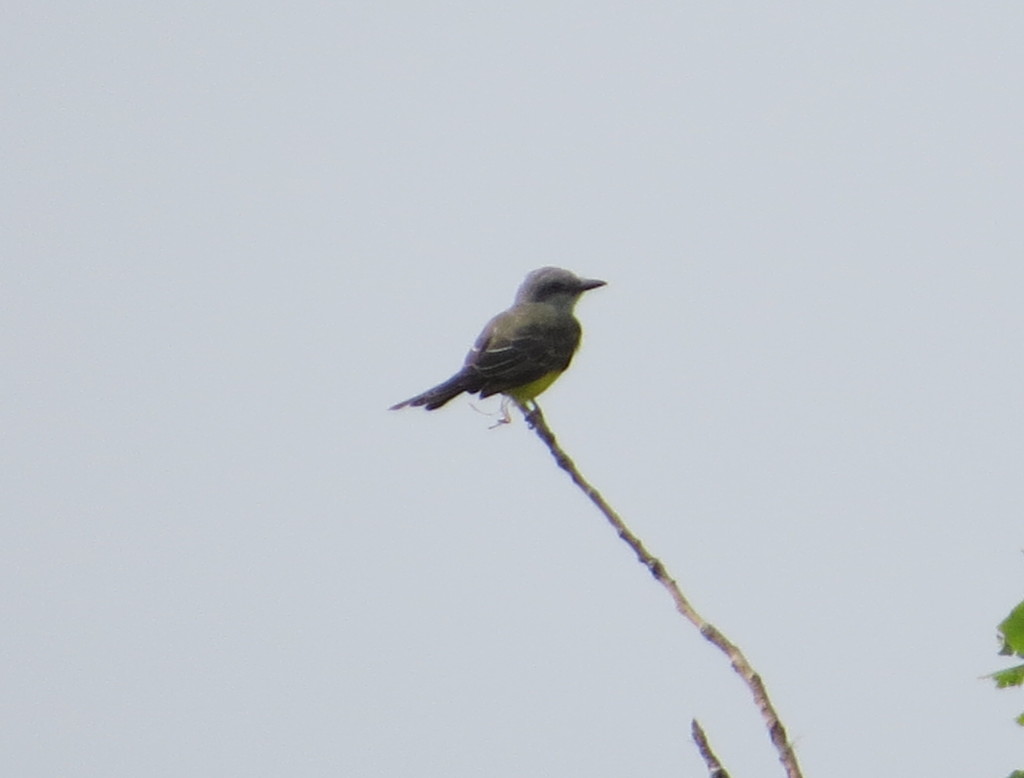 I showed the kids the bird on the camera’s LCD. With another check mark for his list, Evan was out of there (and Melissa and Marin too).
I showed the kids the bird on the camera’s LCD. With another check mark for his list, Evan was out of there (and Melissa and Marin too).
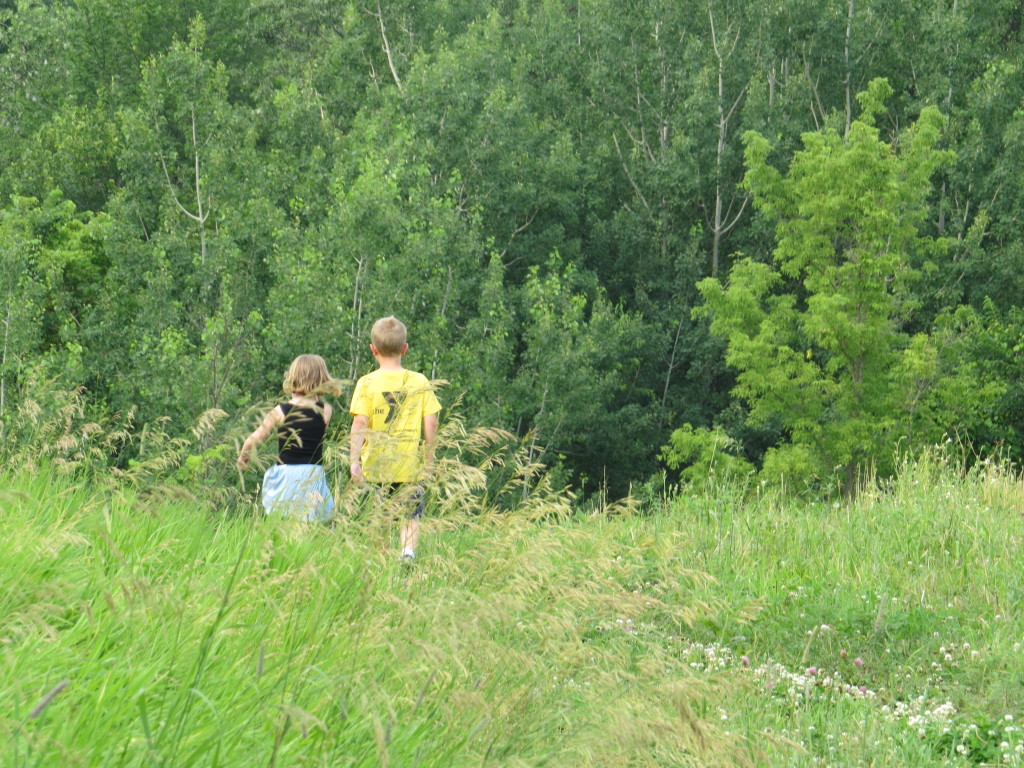 I was hoping for better photos, so I stayed for a little while. After ten minutes of observation, something incredible happened that two other birders present and myself witnessed: the Tropical Kingbird stretched out its neck, pulled its wings behind its back, and vocalized! It was a 1-second higher-pitched trill. I later listened to the sounds of TRKI on the iPod, and it was a match for the first call listed. I felt bad for all the birders that have watched and watched this bird just waiting for such a moment. Luck of the draw I guess. Just like when something even better then happened–the Kingbird flew to a low perch right on the path! Matt Stratmoen, his 600 mm lense, and I hustled down the path to get near it. We’d snap some photos, creep closer, snap, creep, snap, etc. We eventually got within 100 feet or less.
I was hoping for better photos, so I stayed for a little while. After ten minutes of observation, something incredible happened that two other birders present and myself witnessed: the Tropical Kingbird stretched out its neck, pulled its wings behind its back, and vocalized! It was a 1-second higher-pitched trill. I later listened to the sounds of TRKI on the iPod, and it was a match for the first call listed. I felt bad for all the birders that have watched and watched this bird just waiting for such a moment. Luck of the draw I guess. Just like when something even better then happened–the Kingbird flew to a low perch right on the path! Matt Stratmoen, his 600 mm lense, and I hustled down the path to get near it. We’d snap some photos, creep closer, snap, creep, snap, etc. We eventually got within 100 feet or less.
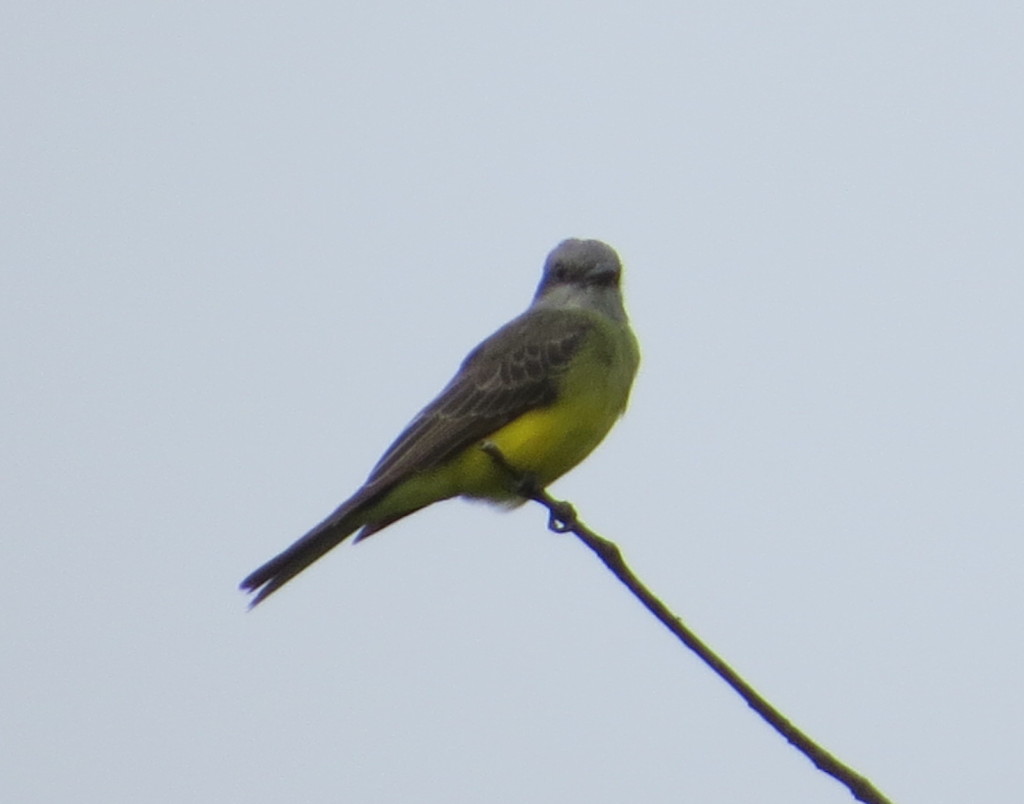 Matt is the one who took that amazing image of the Orr Black-backed Woodpeckers with the mom and dad in profile perched on either side of the nest hole with the baby sticking his head out screaming. Amazing image. It’s on MOU’s website.
Matt is the one who took that amazing image of the Orr Black-backed Woodpeckers with the mom and dad in profile perched on either side of the nest hole with the baby sticking his head out screaming. Amazing image. It’s on MOU’s website.
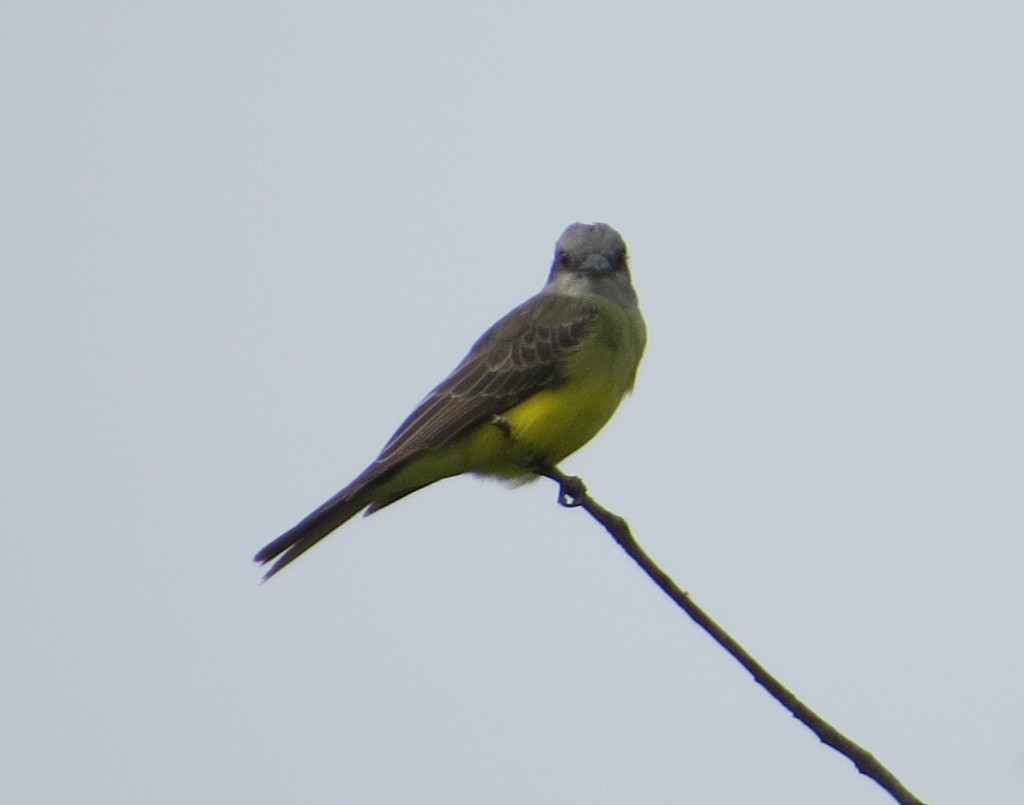 We won’t talk about the quality difference between Matt’s photos and mine of the Tropical Kingbird from the same distance. But I can live with mine. The views were phenomenal and more than I hoped for.
We won’t talk about the quality difference between Matt’s photos and mine of the Tropical Kingbird from the same distance. But I can live with mine. The views were phenomenal and more than I hoped for.
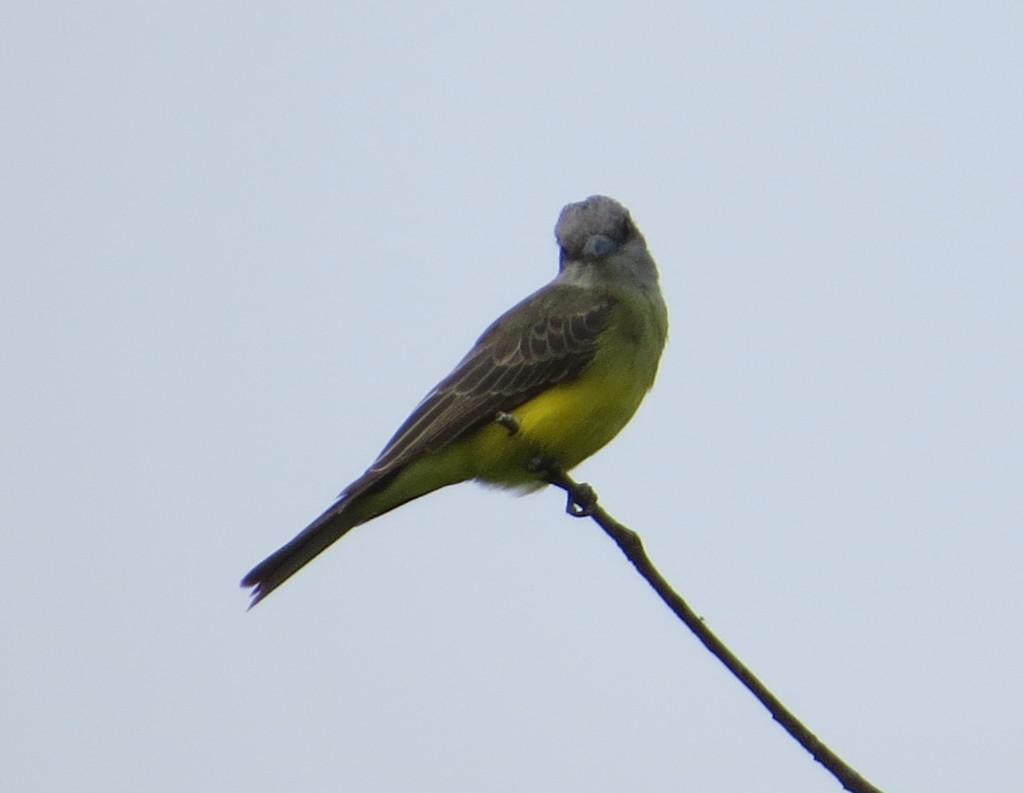
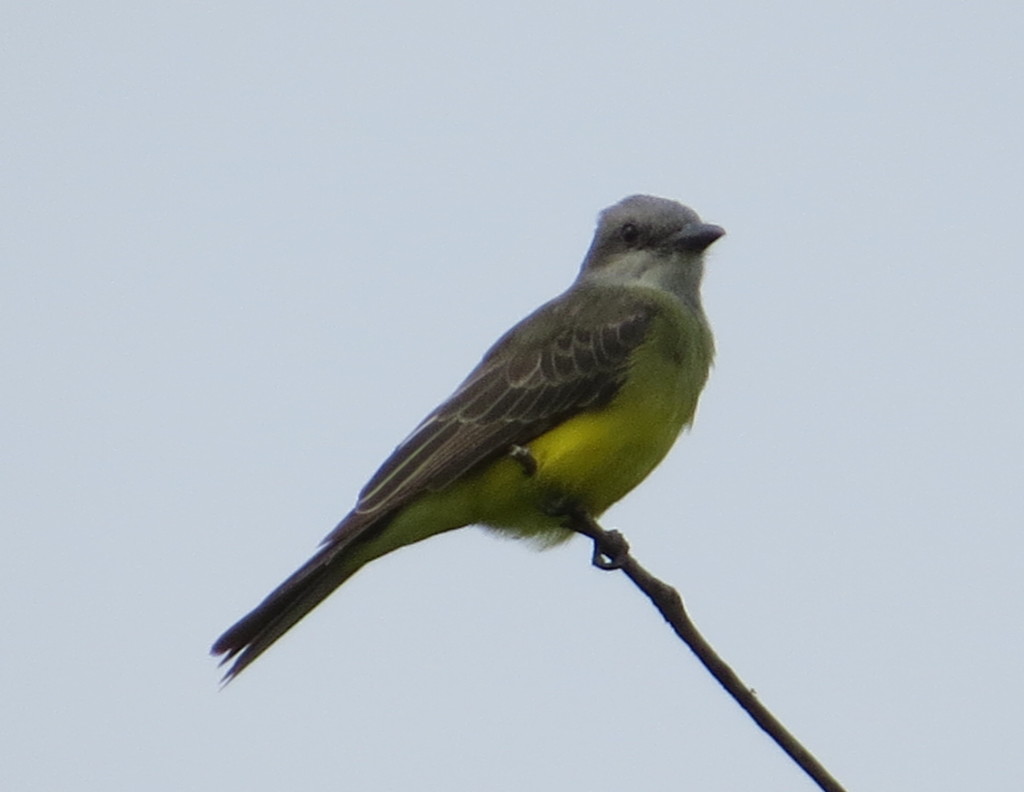 The Kingbird had enough of this low perch and went back to his tall, remote Cottonwood. I got what I came for and then some, so I hustled back to the van after just a half hour of observation. After all, Swedish meatballs and a fight loading Ikea furniture in the van were calling my name.
The Kingbird had enough of this low perch and went back to his tall, remote Cottonwood. I got what I came for and then some, so I hustled back to the van after just a half hour of observation. After all, Swedish meatballs and a fight loading Ikea furniture in the van were calling my name.

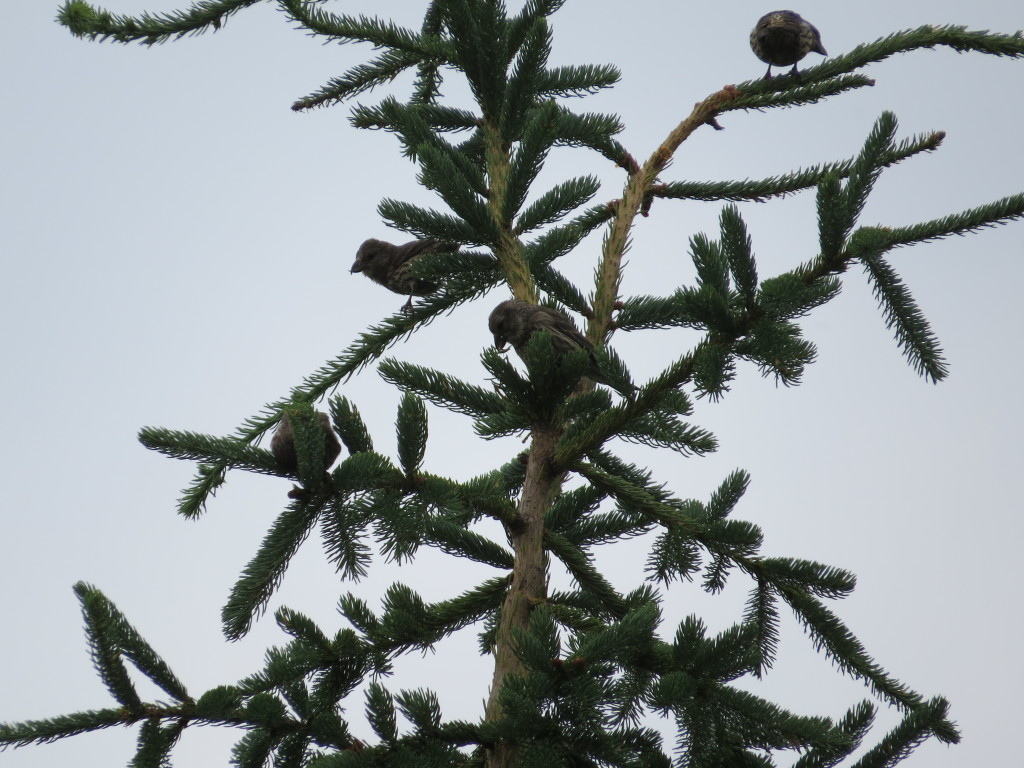
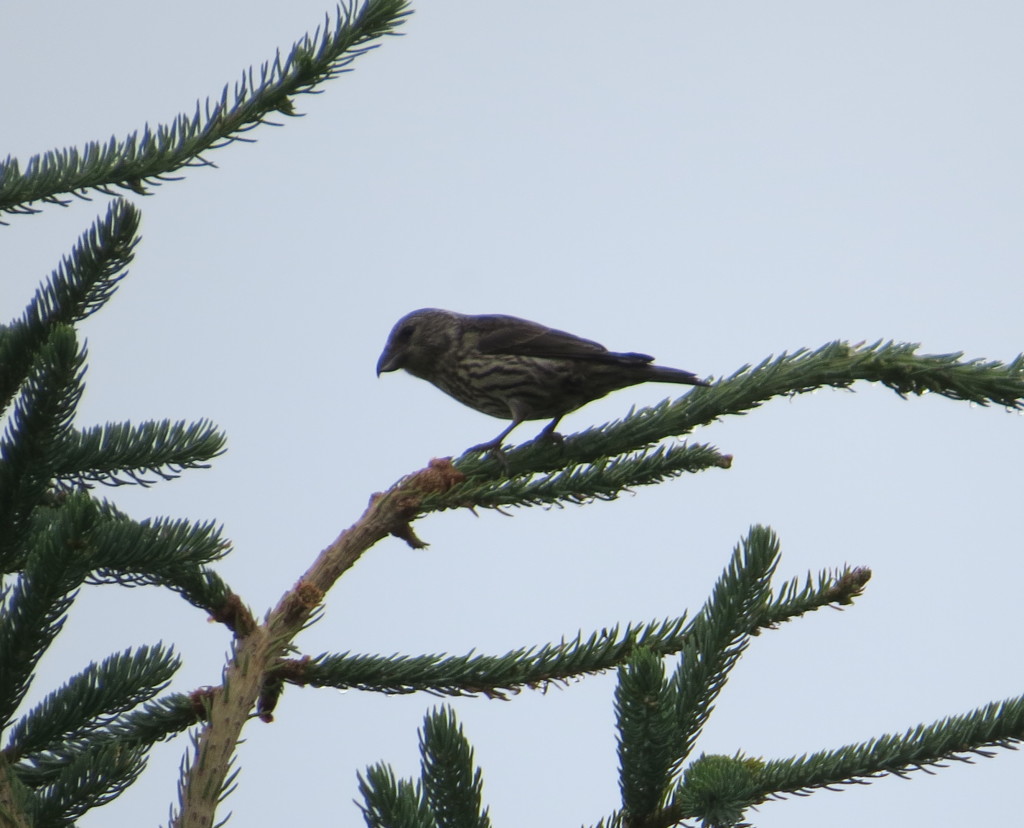
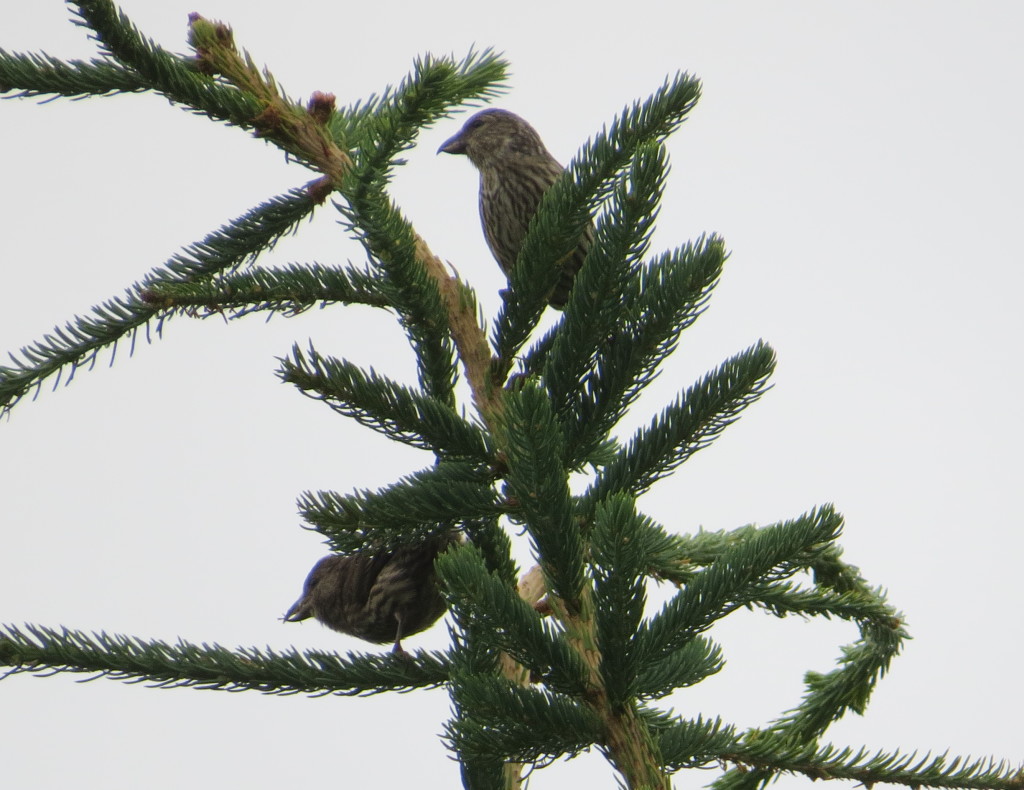
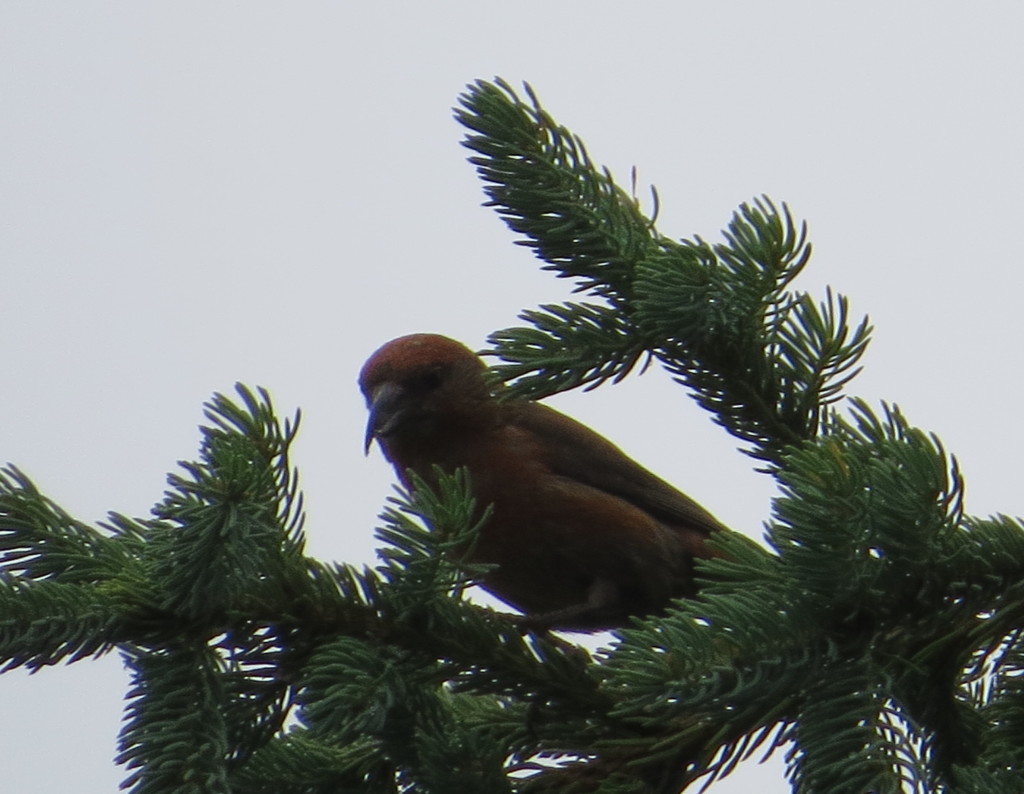 Check out this sequence. Looks tasty…
Check out this sequence. Looks tasty…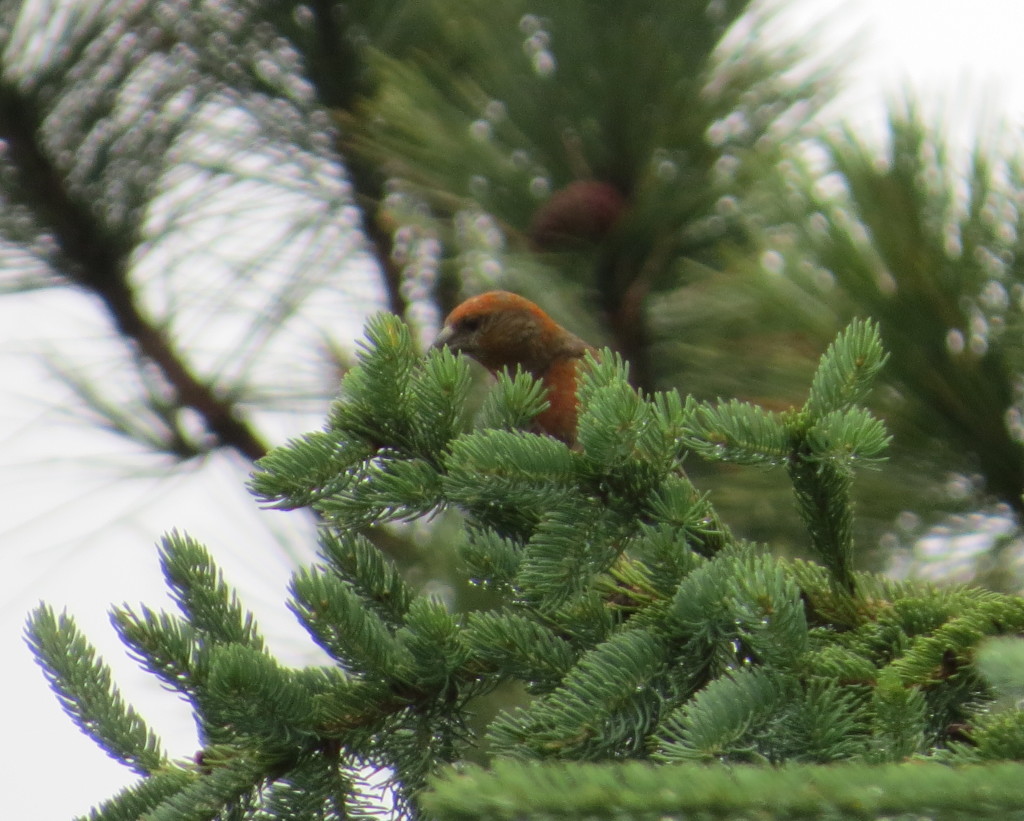 A little snip and…
A little snip and…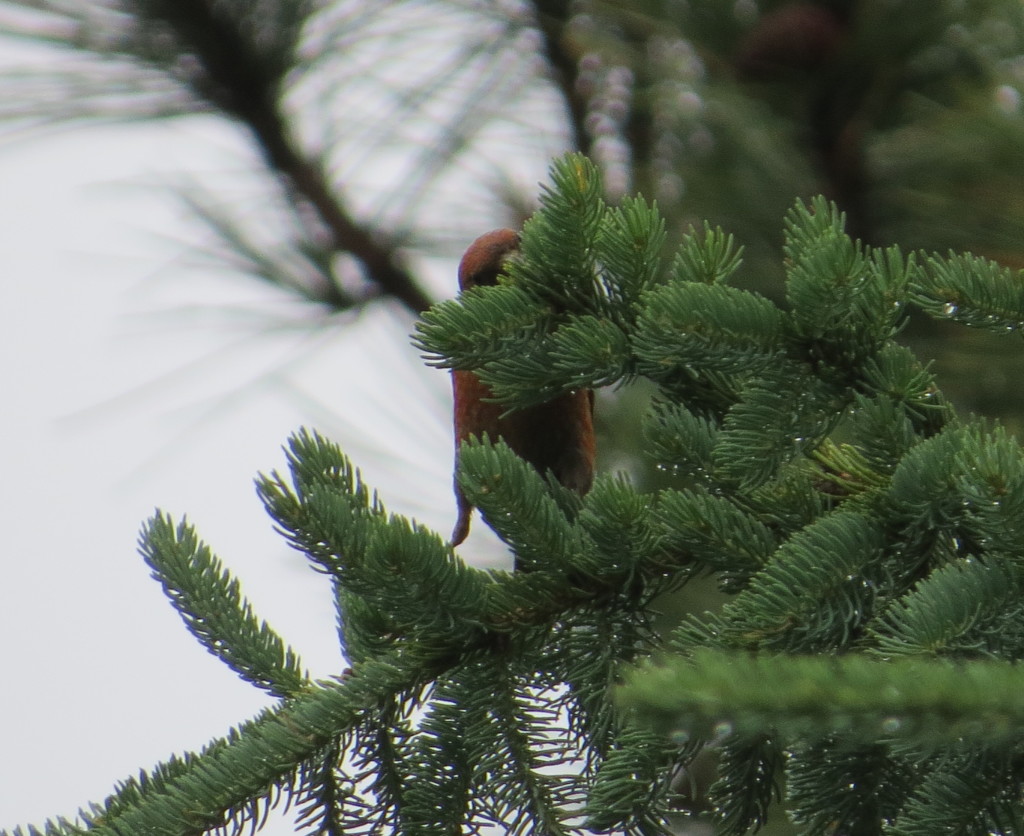 Voilà!
Voilà!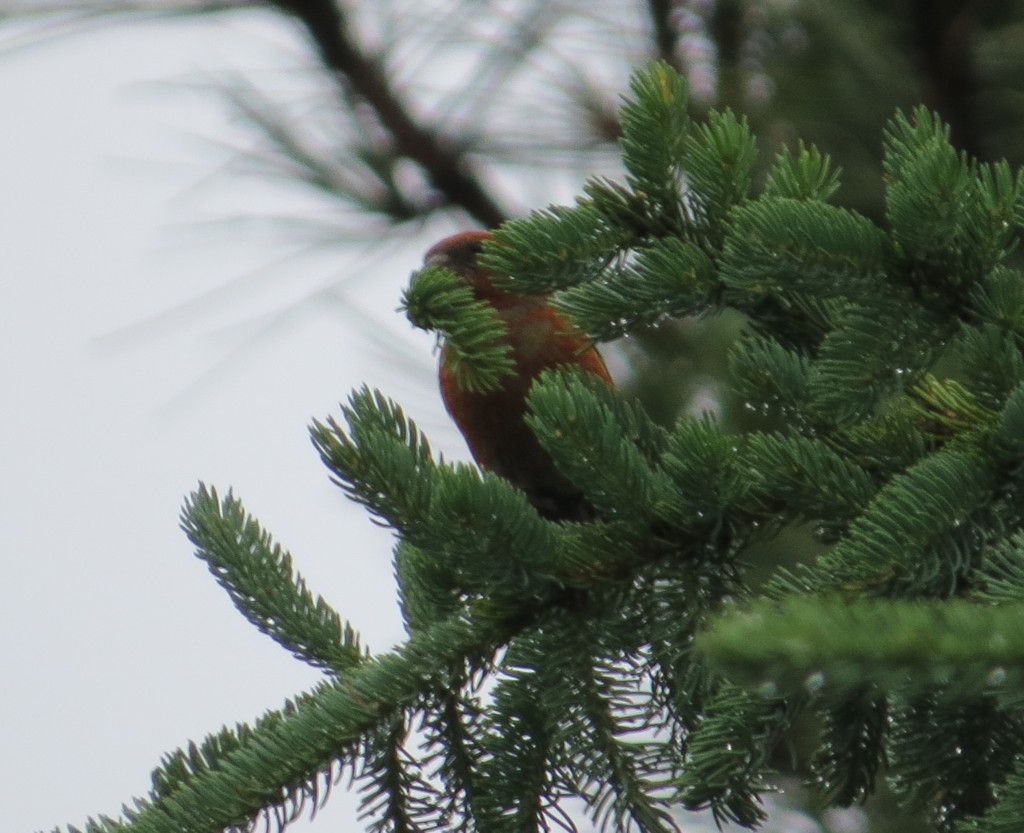 Dad and Evan did get out to see the birds. Evan saw the flock and said, “Yep, I see them,” and then went back into the house. As usual, I wanted good looks and good photographs. I was planning to keep working until I got some I was happy with, but poof! The nomads took off for their next stop on their life’s journey never to be seen by us again.
Dad and Evan did get out to see the birds. Evan saw the flock and said, “Yep, I see them,” and then went back into the house. As usual, I wanted good looks and good photographs. I was planning to keep working until I got some I was happy with, but poof! The nomads took off for their next stop on their life’s journey never to be seen by us again. 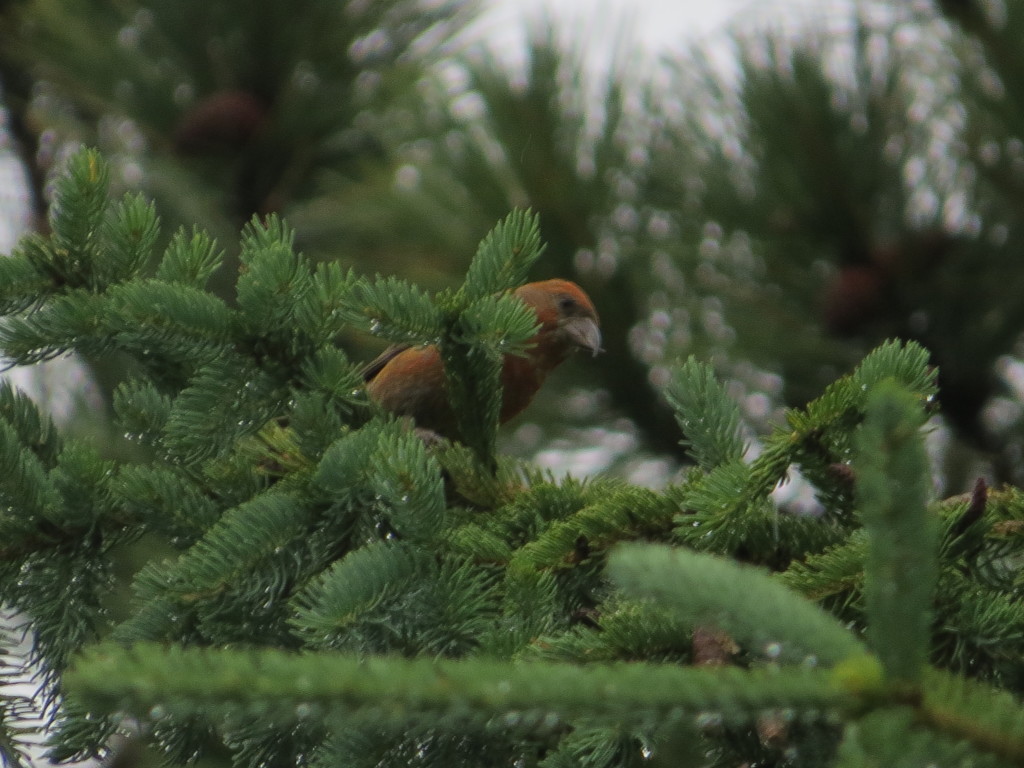 What a thrill it was to get this life bird. Each new life bird now is especially fun because they are such good birds at this point proven by the fact that we still haven’t seen some of them after several years of birding. Red Crossbills in particular are tough birds to get in Minnesota even though they are year-round residents here. Not only was it a treat to finally see a Red Crossbill, but a three-generation lifer in the YARD is completely unheard of at this stage in the game. I still can’t believe the serendipity of this encounter. Absolutely awesome, absolutely hands-down the best bird of this trip North. A Red Crossbill lifer and a Black-backed Woodpecker lifer seen within the same week at this time of year–unbelievable. I thought I was going to have to wait for next winter to take another crack at those two.
What a thrill it was to get this life bird. Each new life bird now is especially fun because they are such good birds at this point proven by the fact that we still haven’t seen some of them after several years of birding. Red Crossbills in particular are tough birds to get in Minnesota even though they are year-round residents here. Not only was it a treat to finally see a Red Crossbill, but a three-generation lifer in the YARD is completely unheard of at this stage in the game. I still can’t believe the serendipity of this encounter. Absolutely awesome, absolutely hands-down the best bird of this trip North. A Red Crossbill lifer and a Black-backed Woodpecker lifer seen within the same week at this time of year–unbelievable. I thought I was going to have to wait for next winter to take another crack at those two.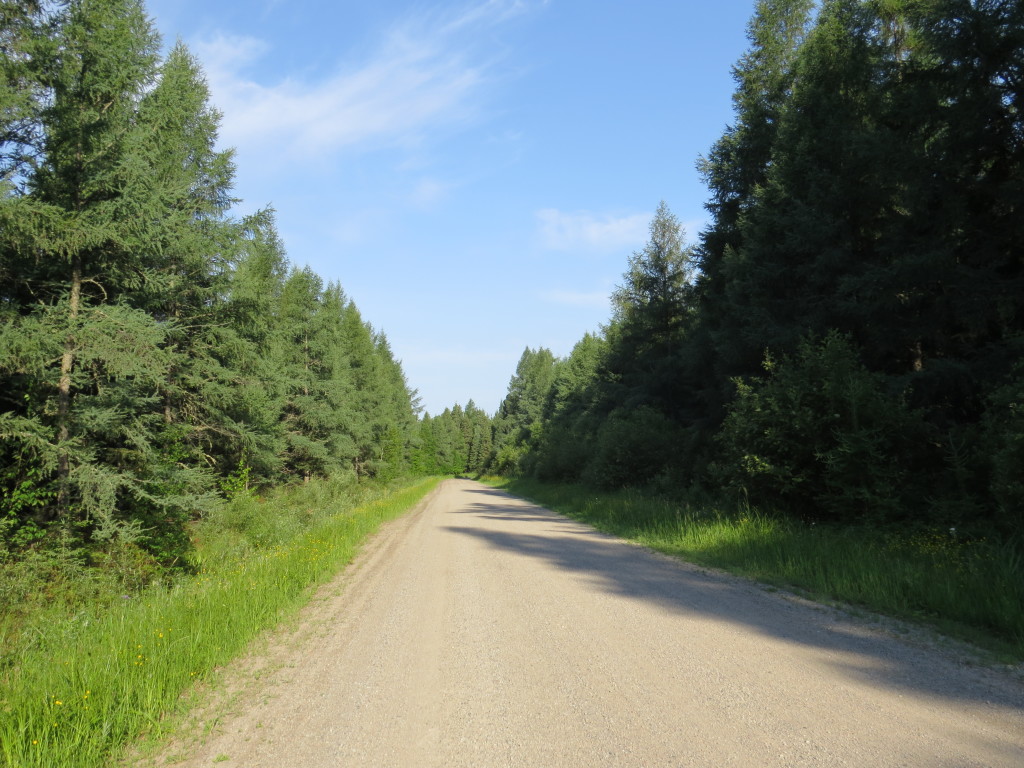 Northern Minnesota is home. Every season offers up something special in terms of wildlife and scenery. I was able to get out and do some birding in the forests, bogs, and open country on the same recent trip that included the Blackburnian Warbler. Cool stuff abounds everywhere here. It was good to be home.
Northern Minnesota is home. Every season offers up something special in terms of wildlife and scenery. I was able to get out and do some birding in the forests, bogs, and open country on the same recent trip that included the Blackburnian Warbler. Cool stuff abounds everywhere here. It was good to be home.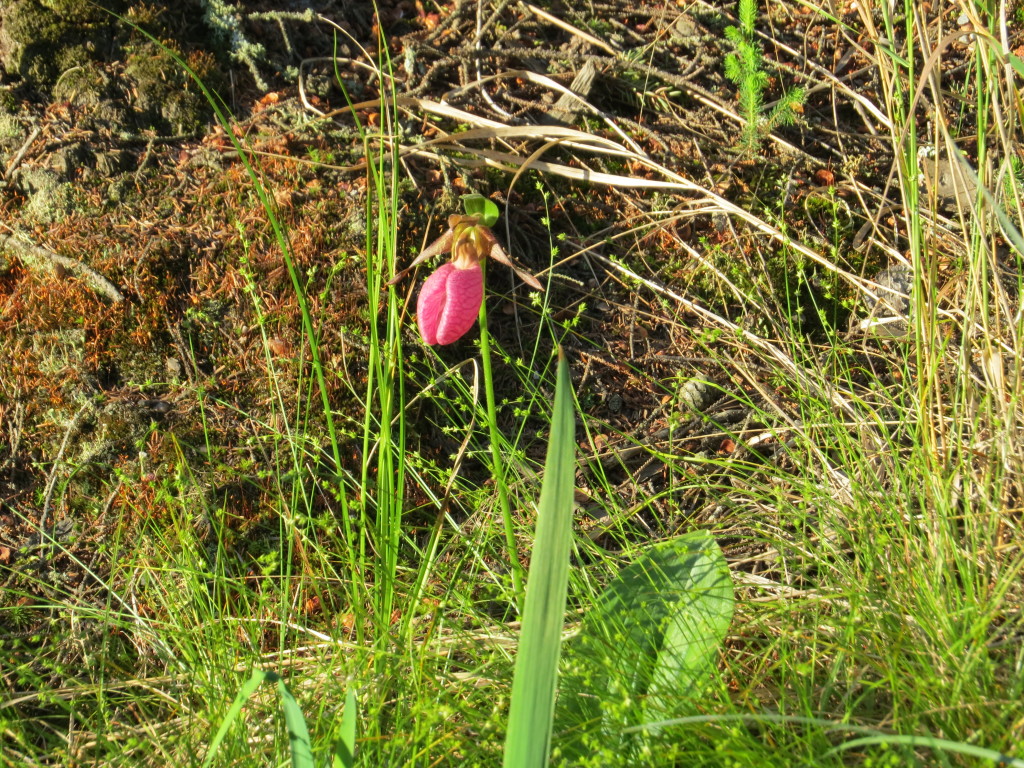
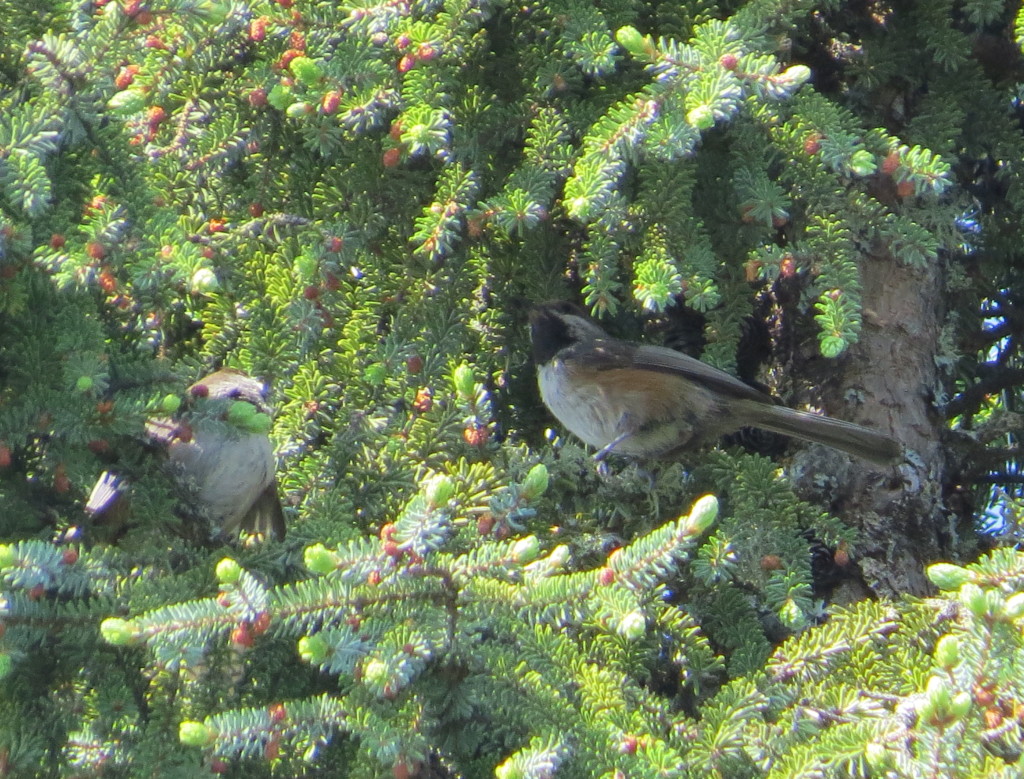 Judging from my picture, it appears that this was a family group with a couple fledglings! This Chickadee is so cool. Most MN birders only see them in the dead of winter when they come out to the remote feeding station on Admiral Road in the Sax-Zim Bog. I was very pleased to see BOCH in the summer and much closer to home than SZ.
Judging from my picture, it appears that this was a family group with a couple fledglings! This Chickadee is so cool. Most MN birders only see them in the dead of winter when they come out to the remote feeding station on Admiral Road in the Sax-Zim Bog. I was very pleased to see BOCH in the summer and much closer to home than SZ.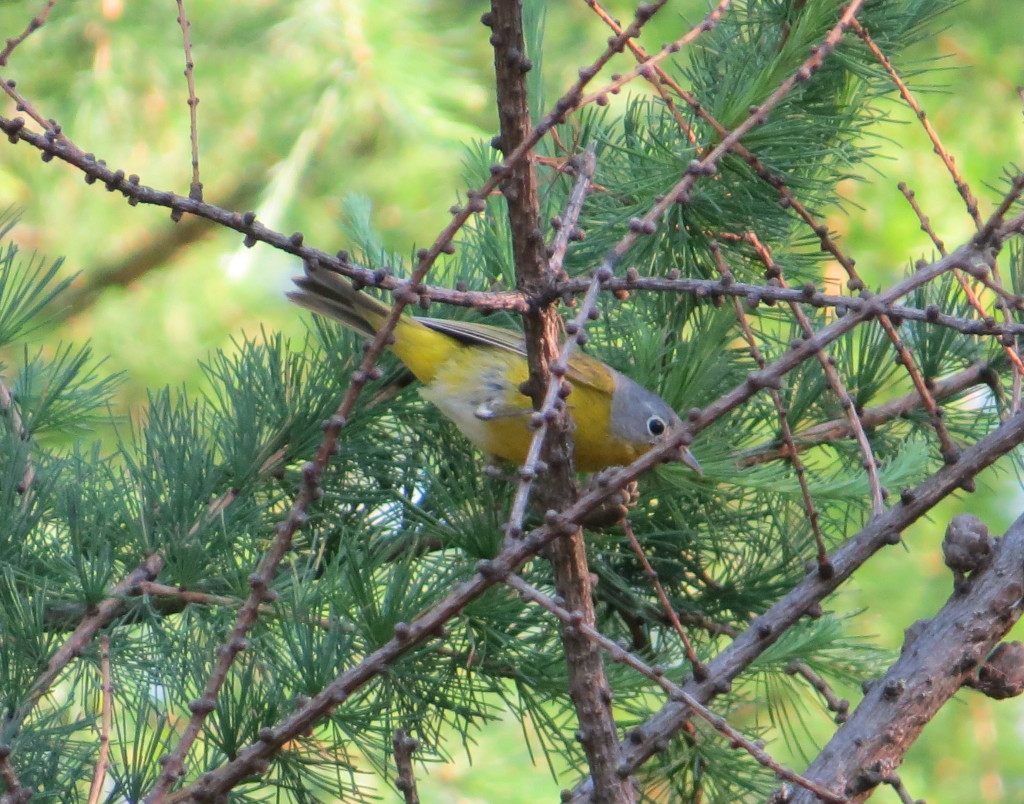
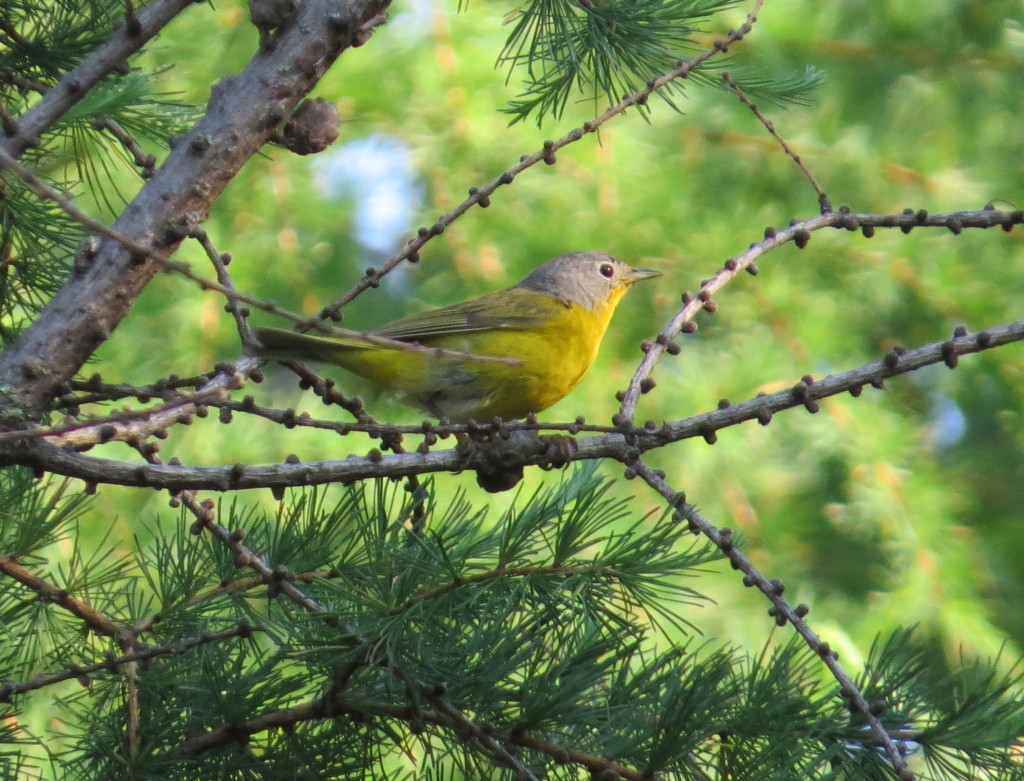 Another fun bird to see even if it couldn’t be seen well was the Lincoln’s Sparrow.
Another fun bird to see even if it couldn’t be seen well was the Lincoln’s Sparrow.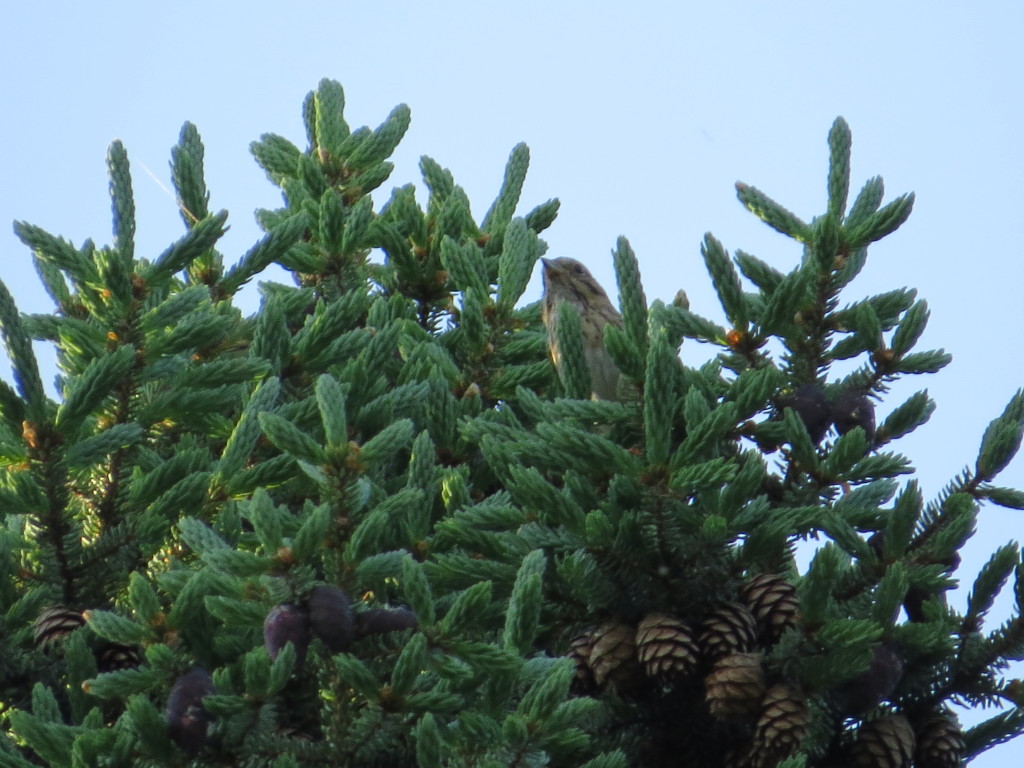 The varied habitats in northern MN offer up some unique opportunities for viewing wildlife. While looking for an American Bittern lifer in a marsh near my parents’ house, I found this gal looking for a place to lay her eggs.
The varied habitats in northern MN offer up some unique opportunities for viewing wildlife. While looking for an American Bittern lifer in a marsh near my parents’ house, I found this gal looking for a place to lay her eggs.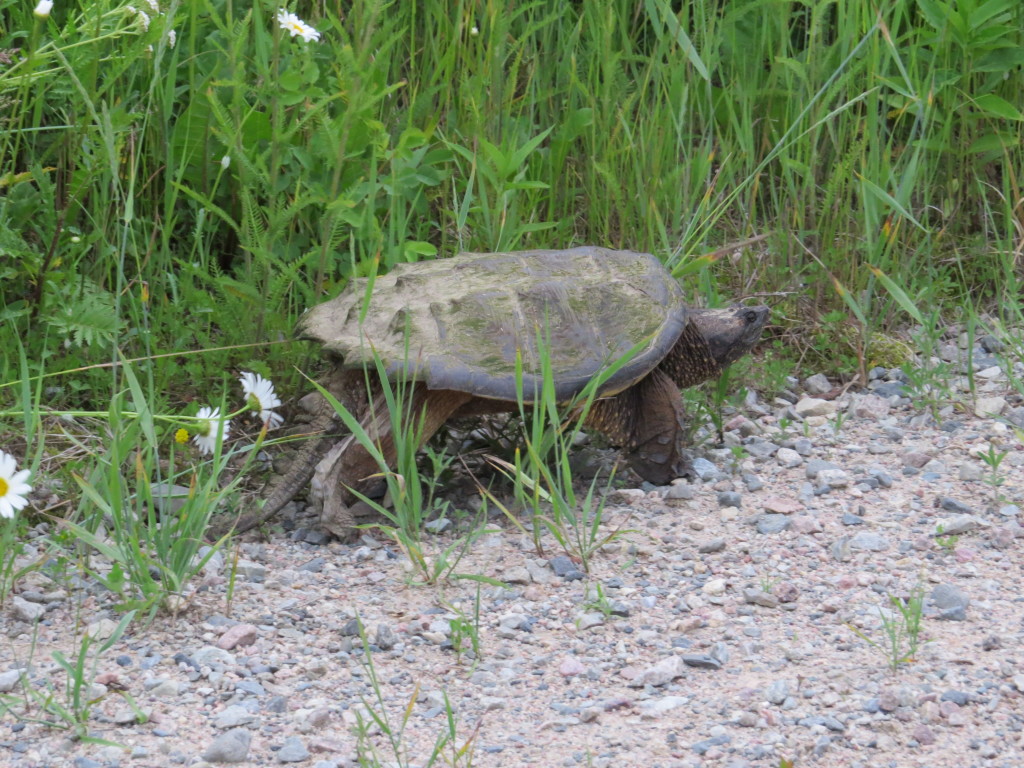 It was not the biggest Snapper I’ve seen. This one’s shell was the size of a dinner plate. I’ve seen them twice as big before.
It was not the biggest Snapper I’ve seen. This one’s shell was the size of a dinner plate. I’ve seen them twice as big before.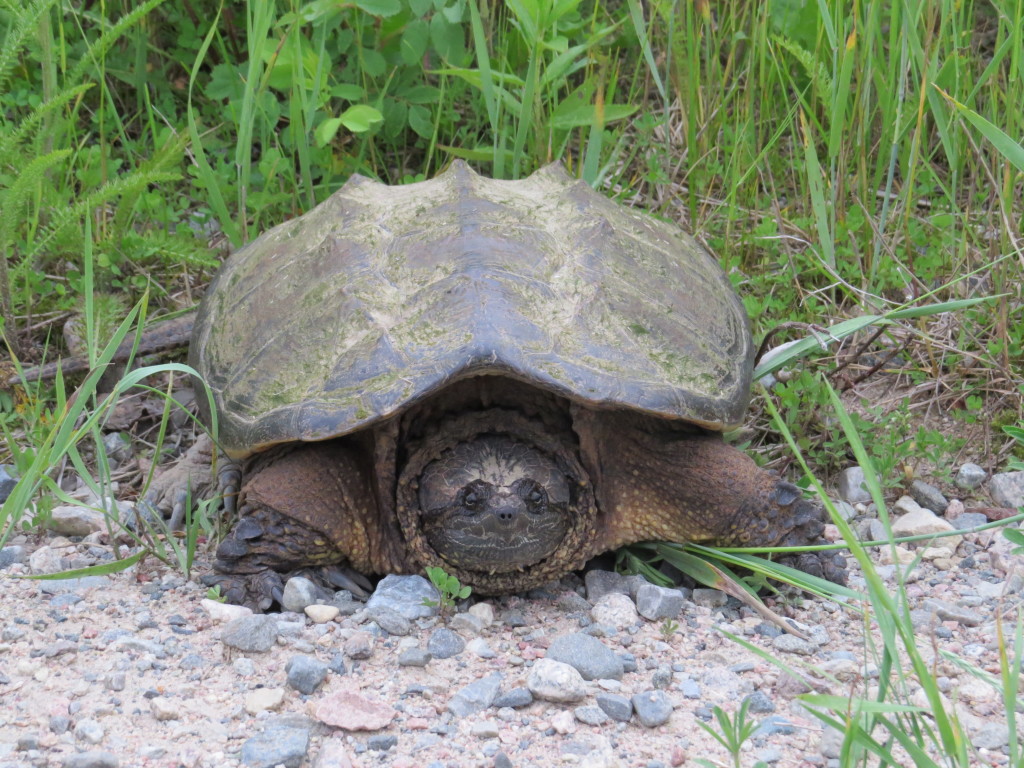 I didn’t spend a lot of time in the mature, upland woods other than just passing through. That was enough to nab my FOY Blue-headed Vireo that I missed during migration.
I didn’t spend a lot of time in the mature, upland woods other than just passing through. That was enough to nab my FOY Blue-headed Vireo that I missed during migration.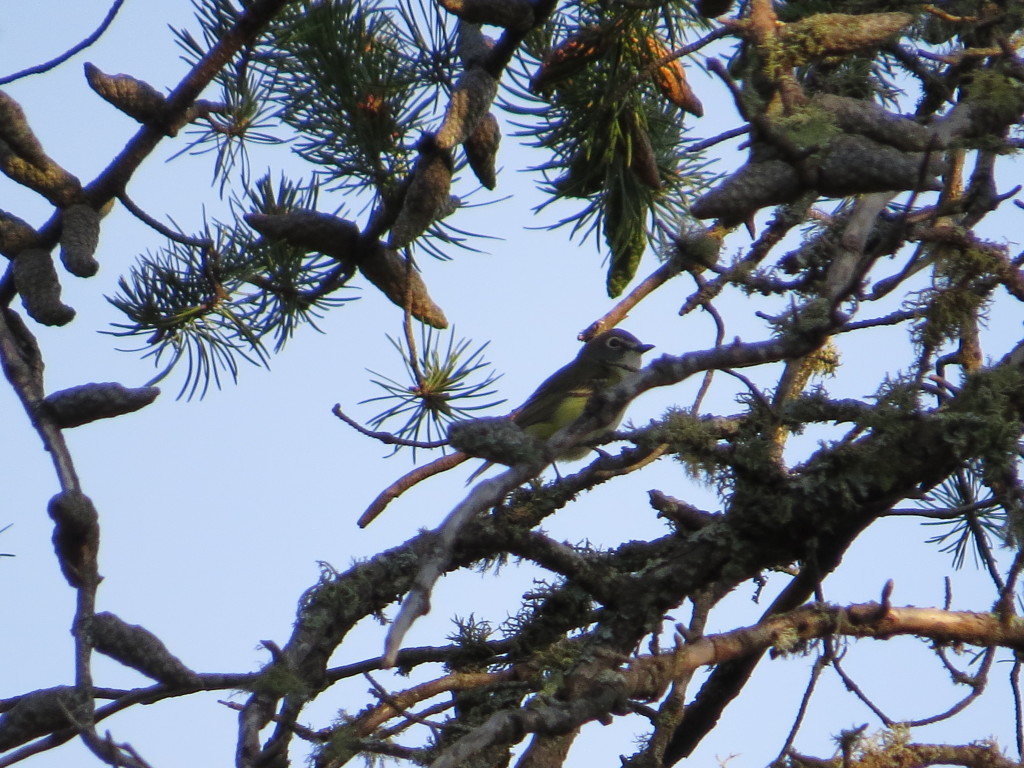 This bird has never been good to me. It was once a nemesis and continues to be a photographic nemesis. By the time I figured out its rhythm of jumping to a new perch each time after it sang, the bird disappeared from sight.
This bird has never been good to me. It was once a nemesis and continues to be a photographic nemesis. By the time I figured out its rhythm of jumping to a new perch each time after it sang, the bird disappeared from sight.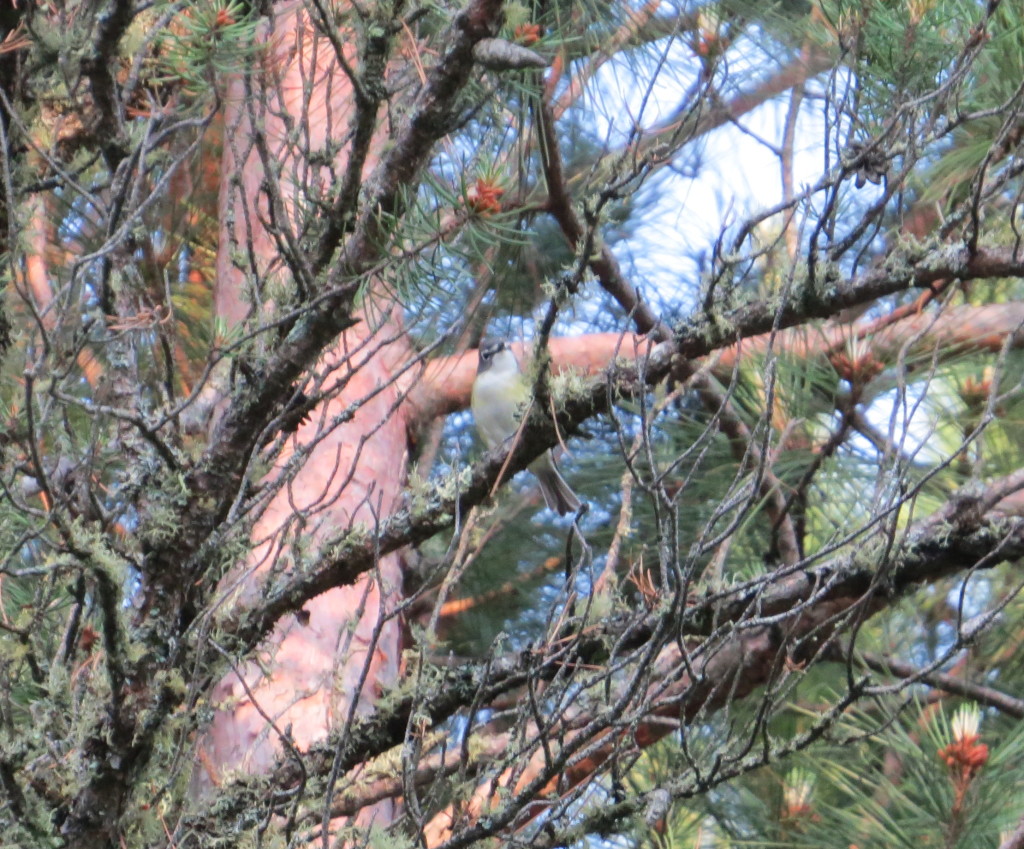
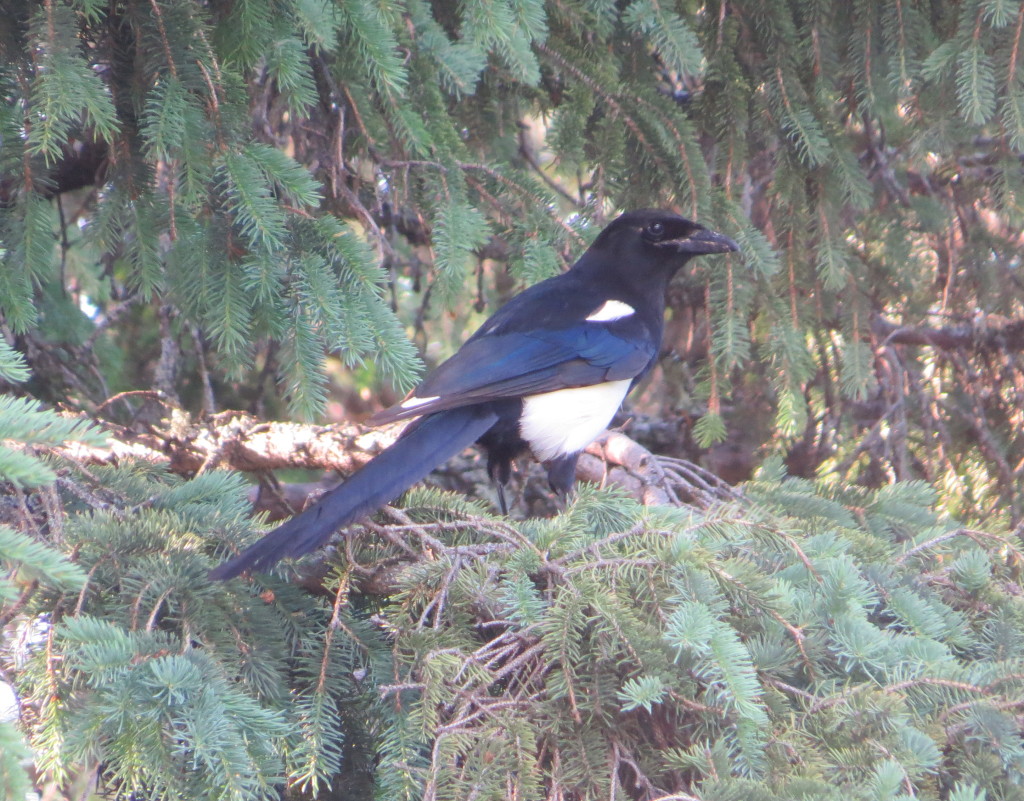 Also found in an open area was a bird that I have seen so many times this year and never before in the Northland, the Brown Thrasher.
Also found in an open area was a bird that I have seen so many times this year and never before in the Northland, the Brown Thrasher.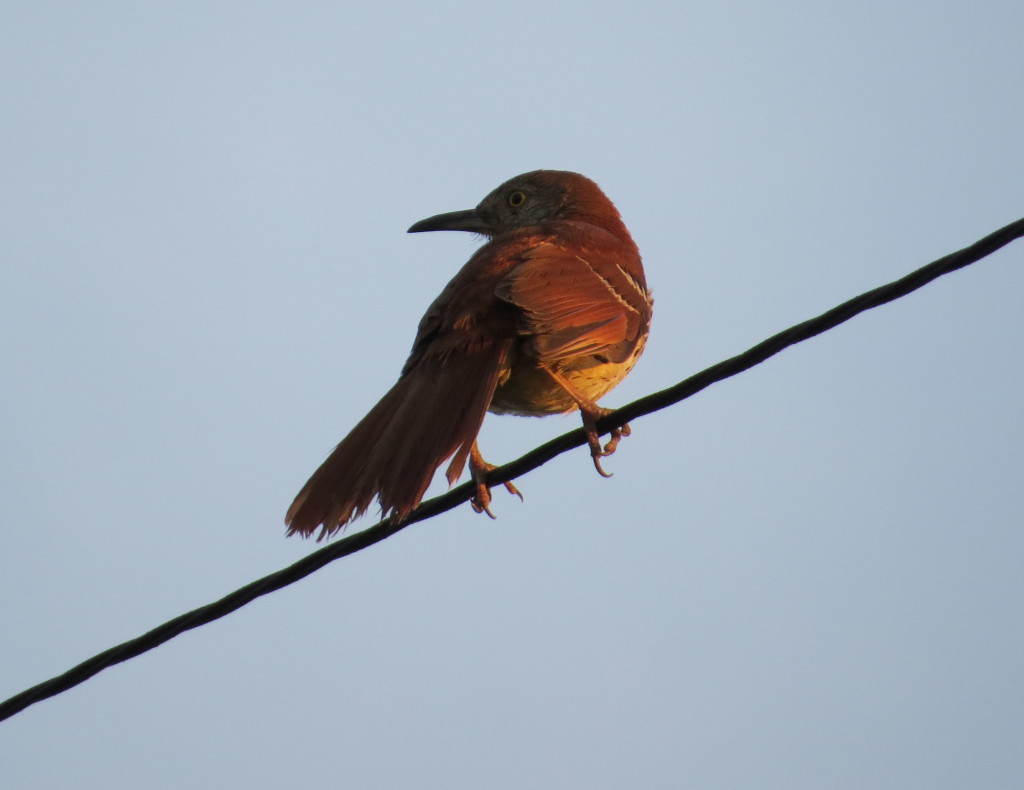 One bird that favors the open grassy fields that intersperse the Northwoods are the showy, and unique-sounding Bobolinks. They must be having a good year because I saw so many.
One bird that favors the open grassy fields that intersperse the Northwoods are the showy, and unique-sounding Bobolinks. They must be having a good year because I saw so many.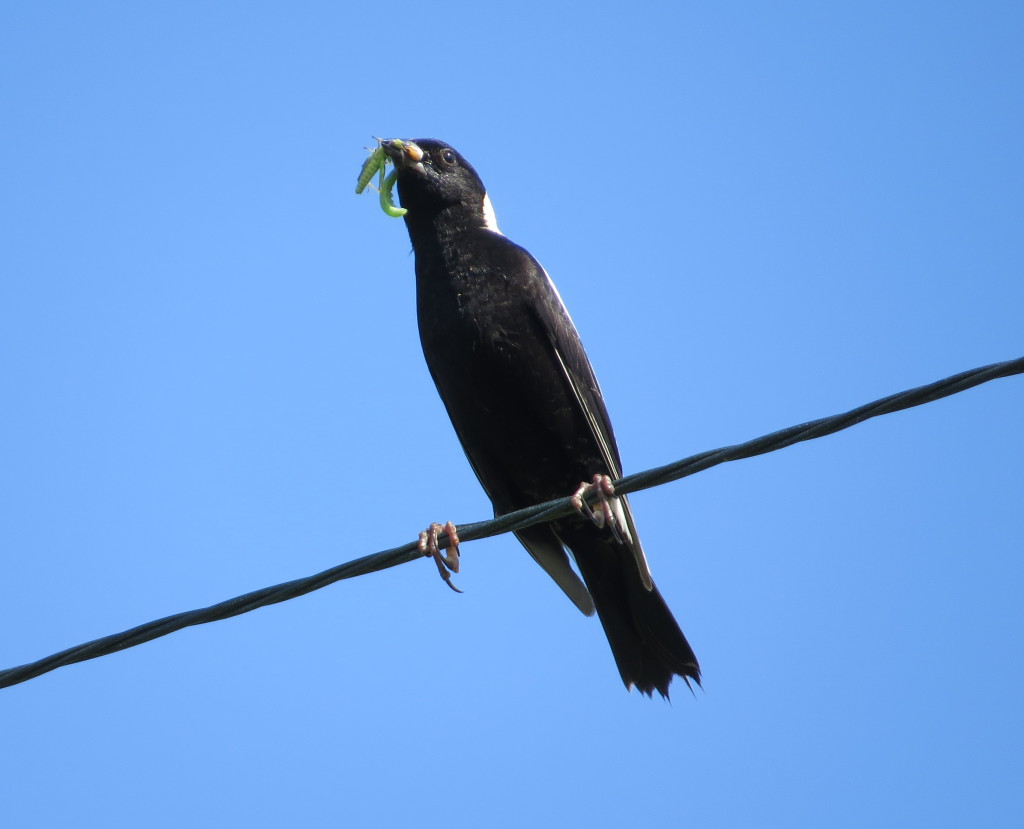
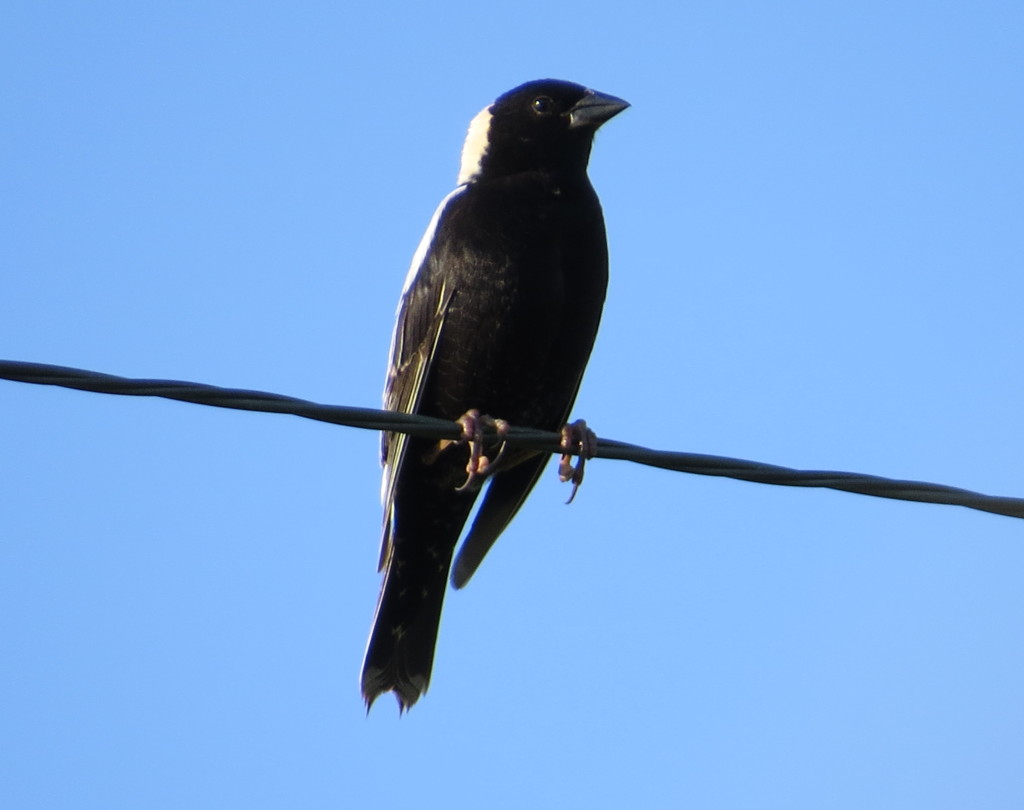
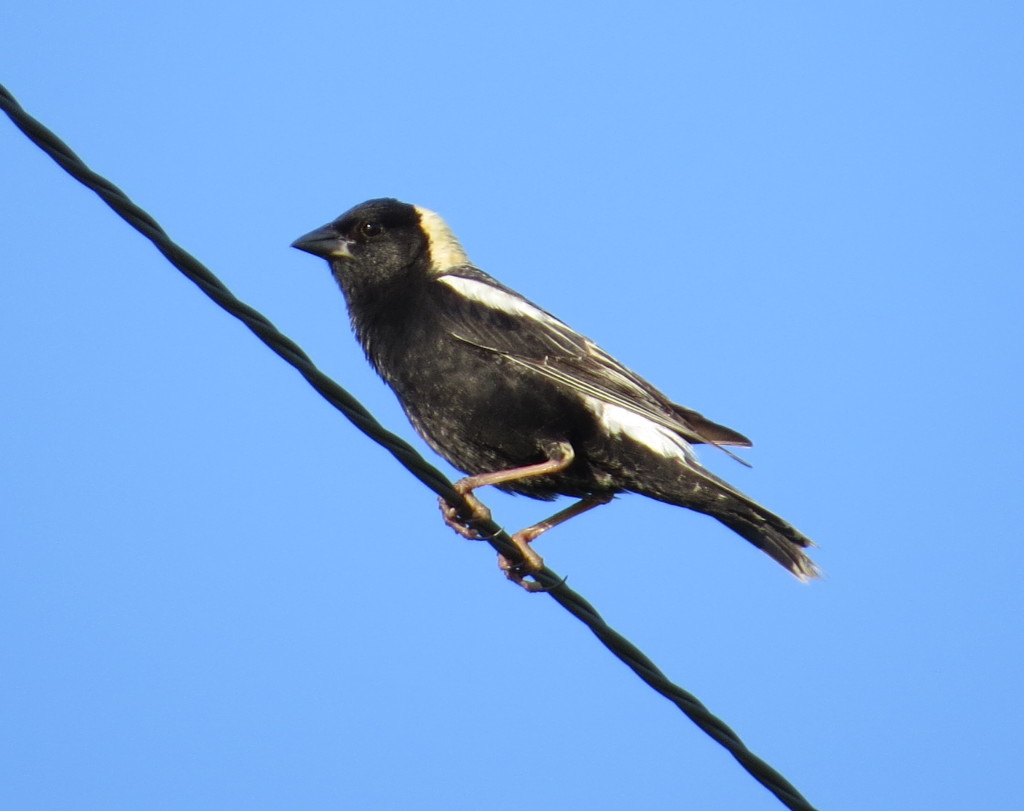
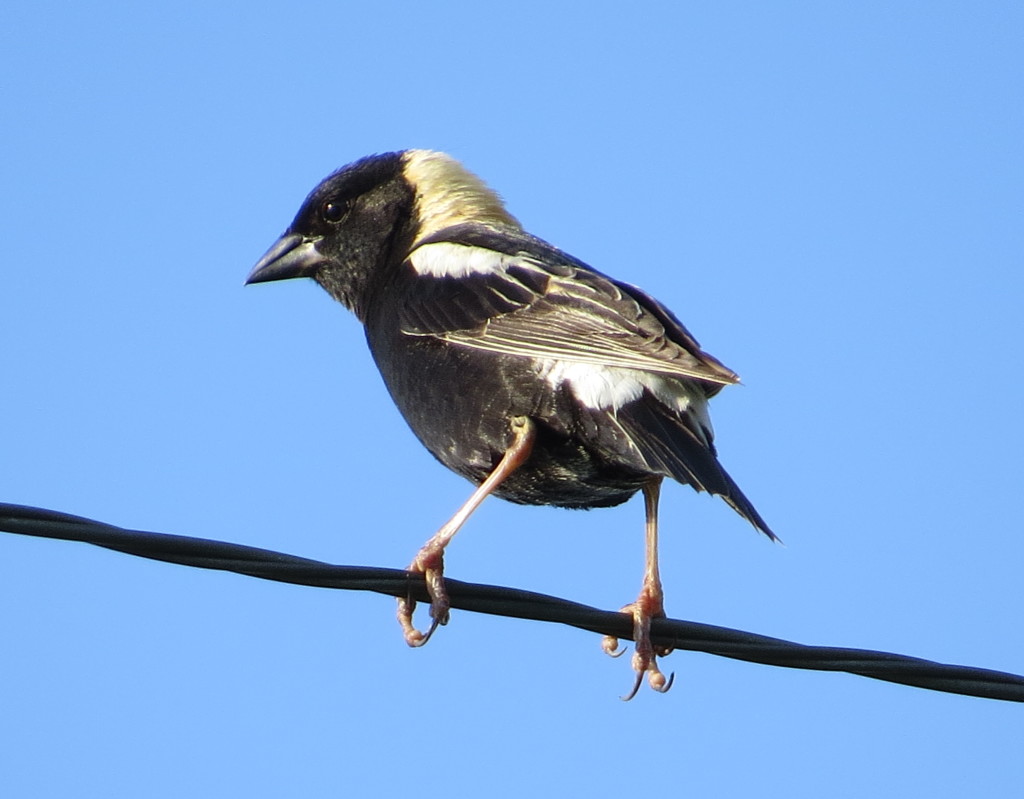 One bird that I was absolutely surprised to find in the open fields were Brewer’s Blackbirds! I had no idea they were in the area. Honestly, I often just dismiss most blackbirds I see as Red-winged Blackbirds or Common Grackles. Needless to say I was pleasantly surprised when I saw the Brewer’s. Like the Bobolink, it was nice to finally be able to get some decent photos of this bird too.
One bird that I was absolutely surprised to find in the open fields were Brewer’s Blackbirds! I had no idea they were in the area. Honestly, I often just dismiss most blackbirds I see as Red-winged Blackbirds or Common Grackles. Needless to say I was pleasantly surprised when I saw the Brewer’s. Like the Bobolink, it was nice to finally be able to get some decent photos of this bird too.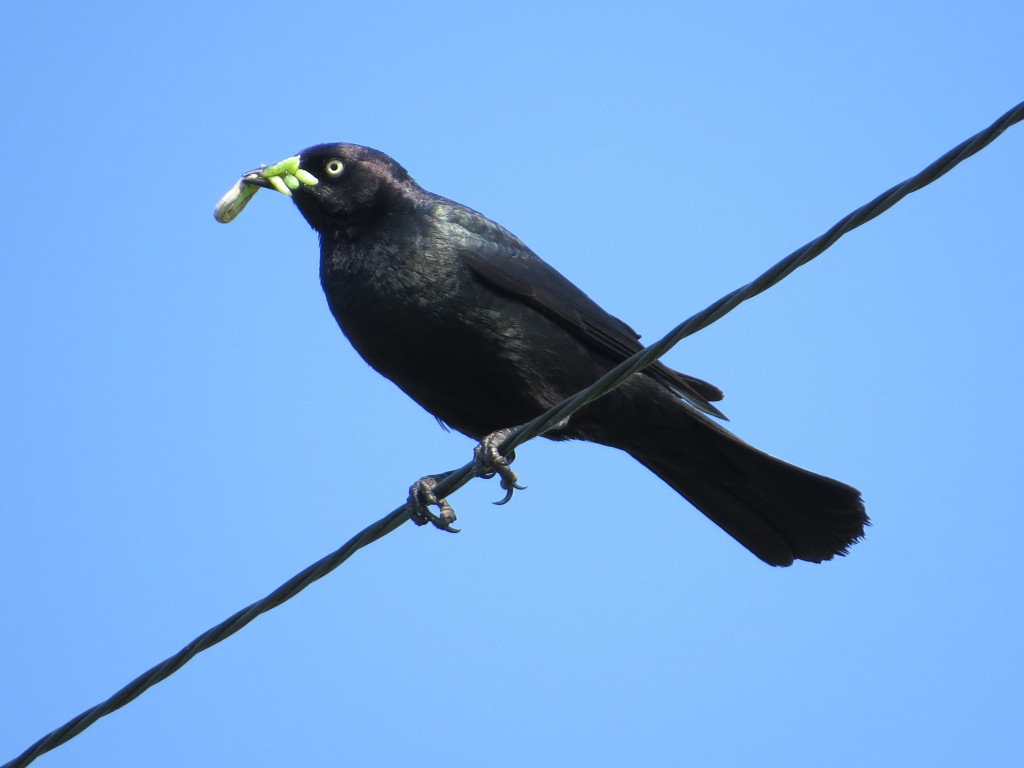
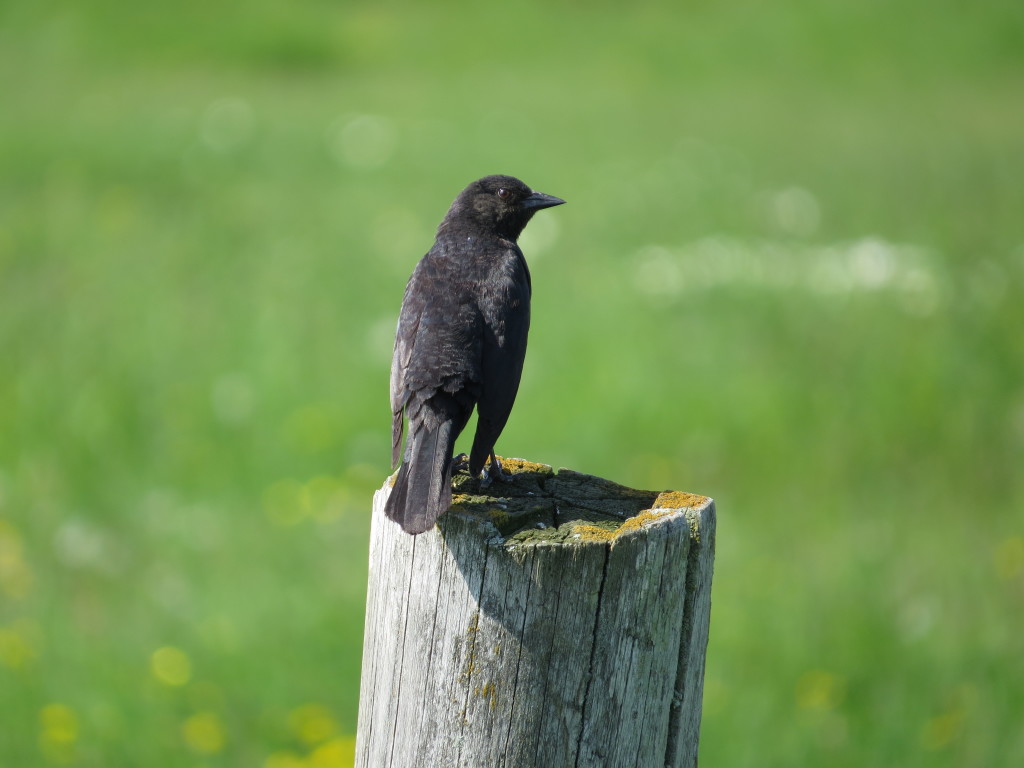
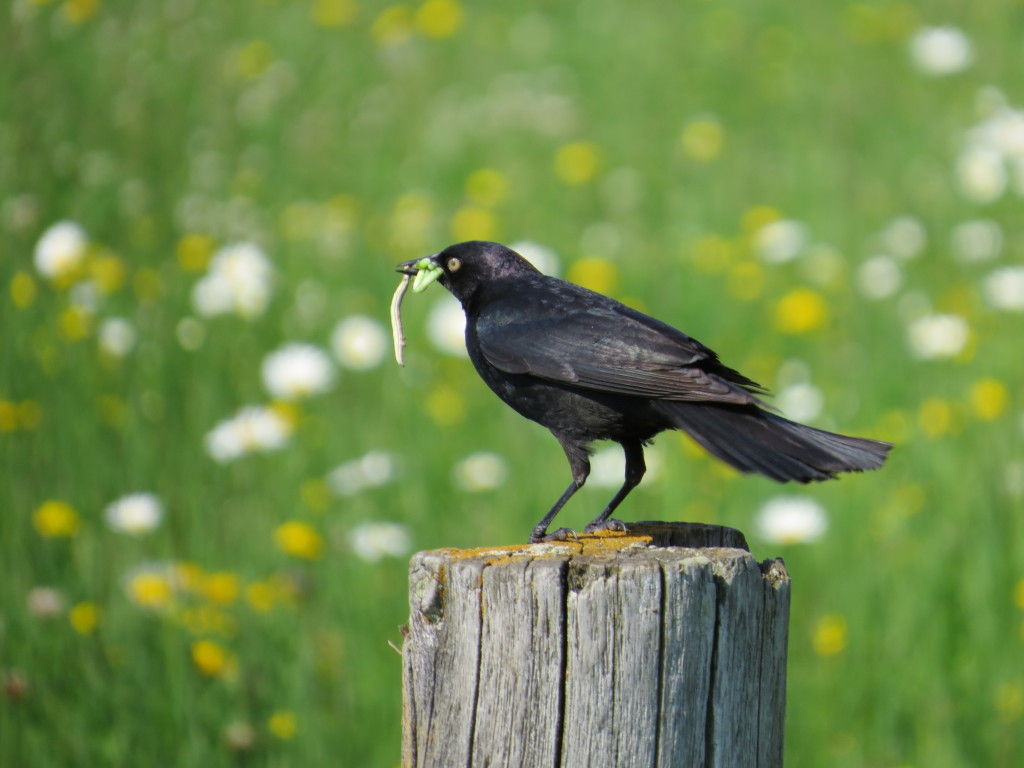
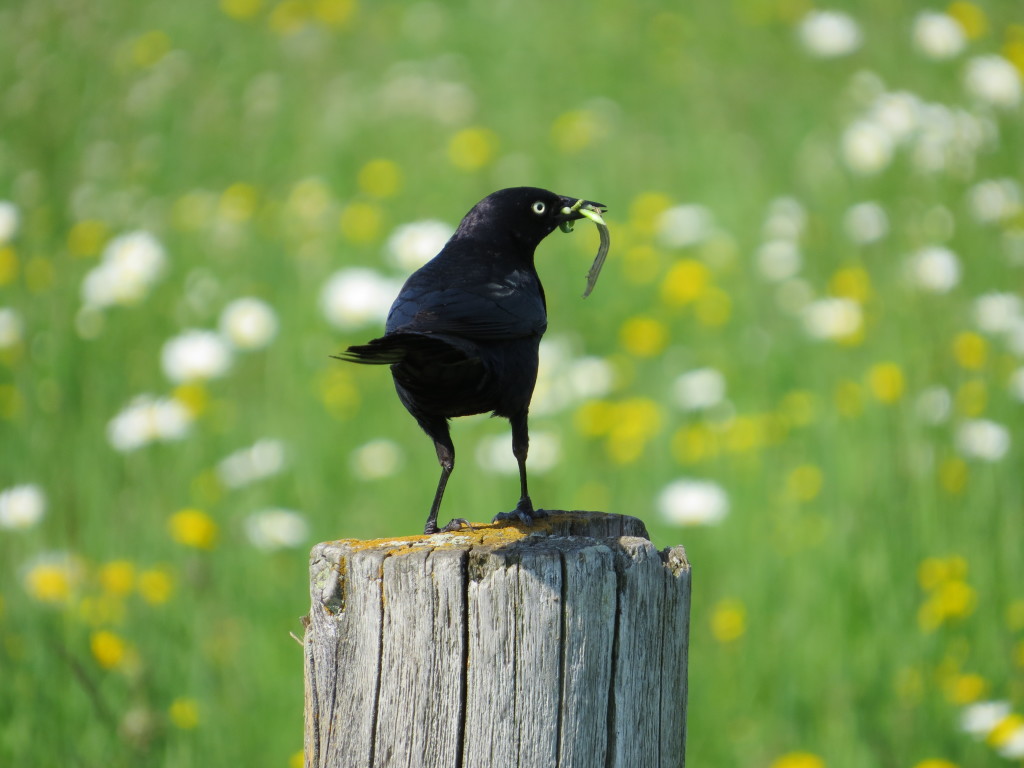
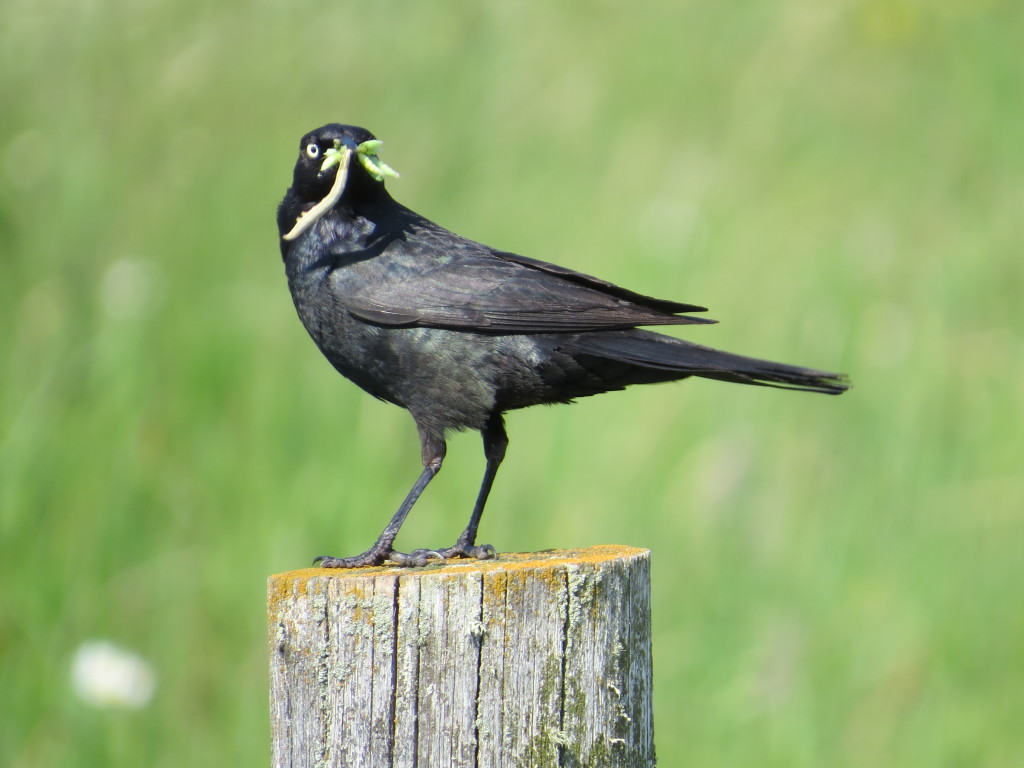 I had some really fun birding on this trip up north. I was not lifer hunting as there really are so few lifers I can still get. And none of them are easy. Or so I thought. In the next post I’ll tell you about a three-generation lifer that was delivered right to the doorstep.
I had some really fun birding on this trip up north. I was not lifer hunting as there really are so few lifers I can still get. And none of them are easy. Or so I thought. In the next post I’ll tell you about a three-generation lifer that was delivered right to the doorstep.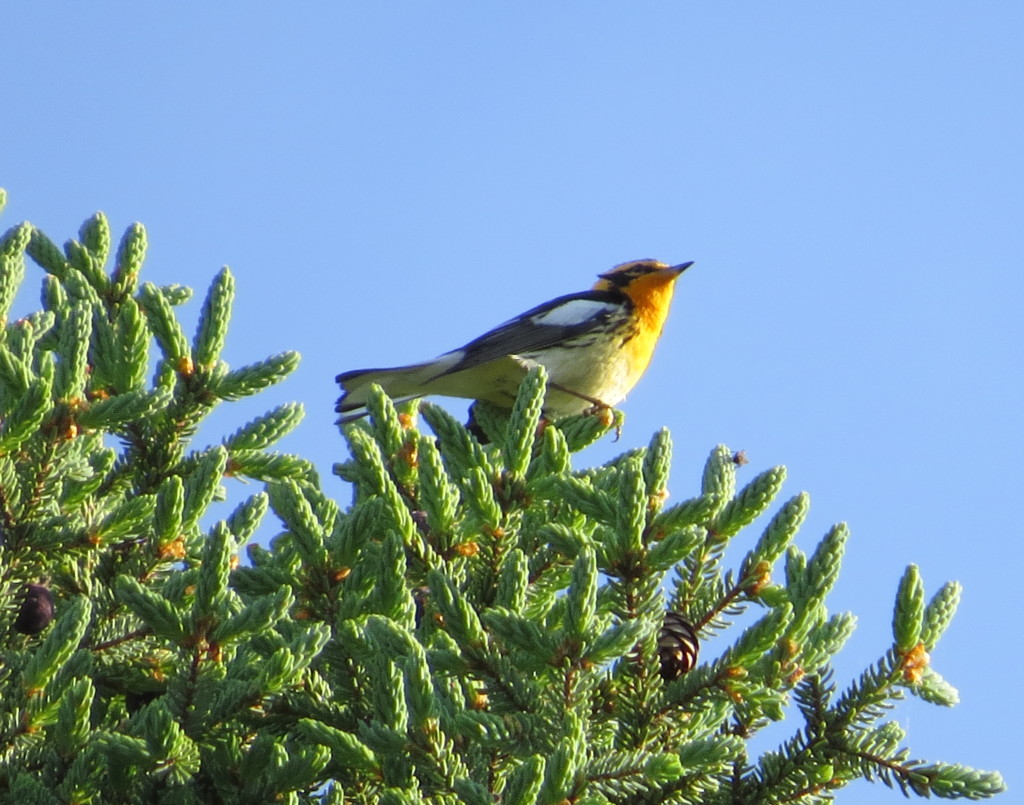
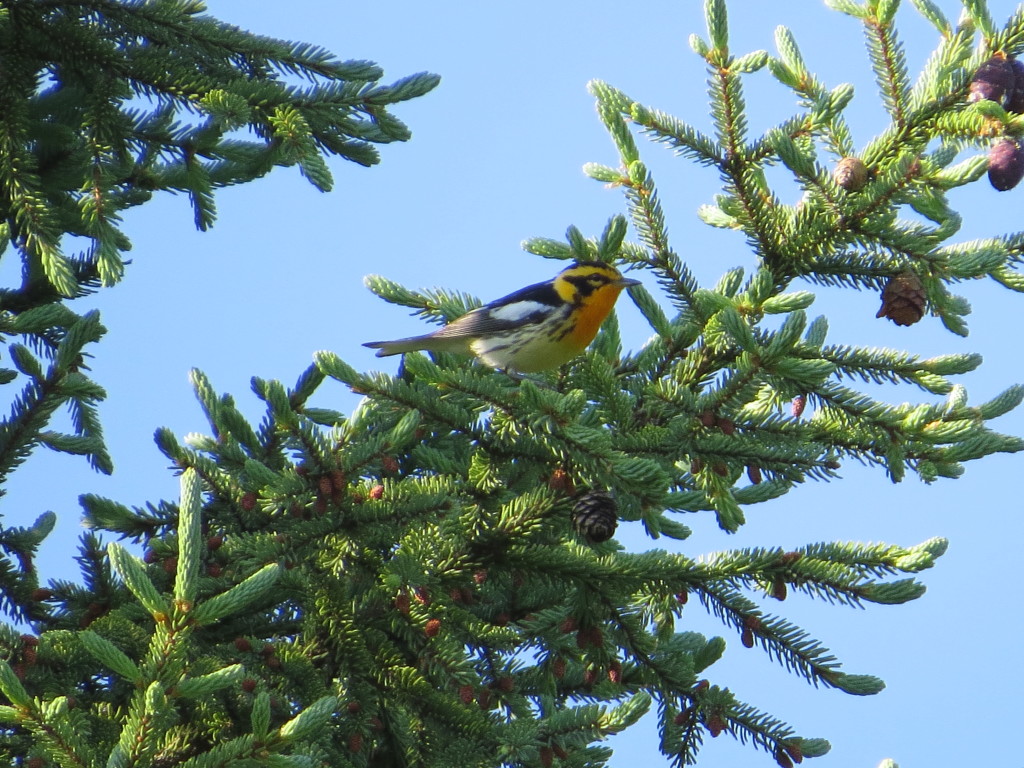
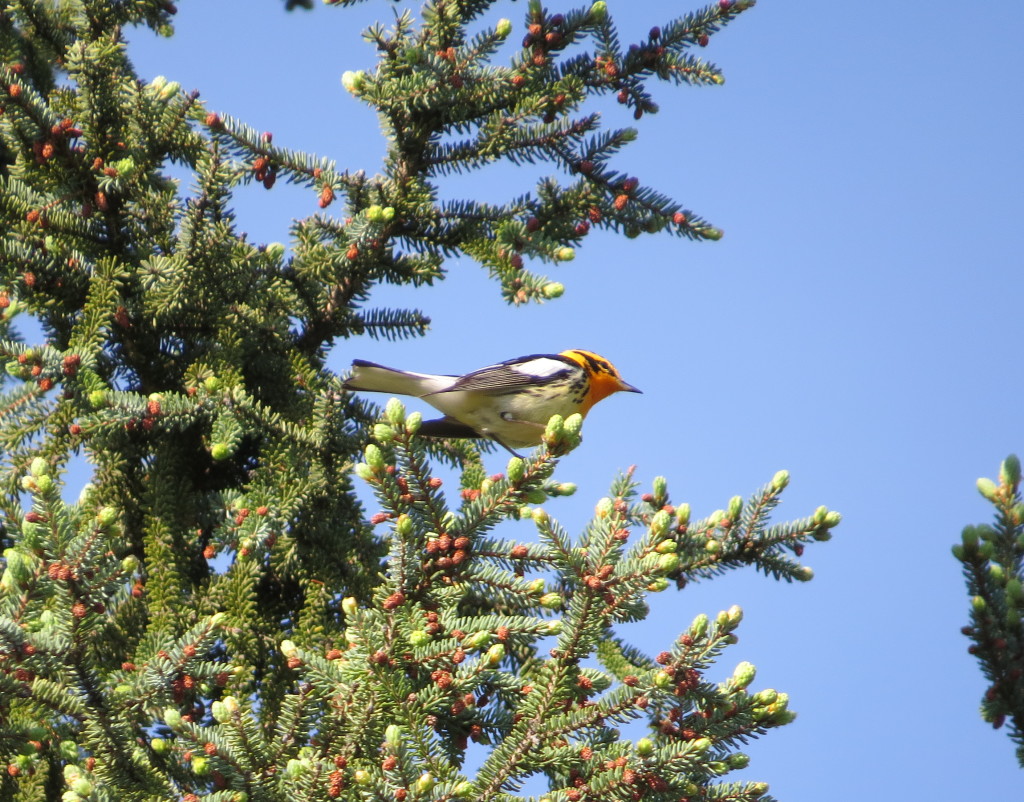
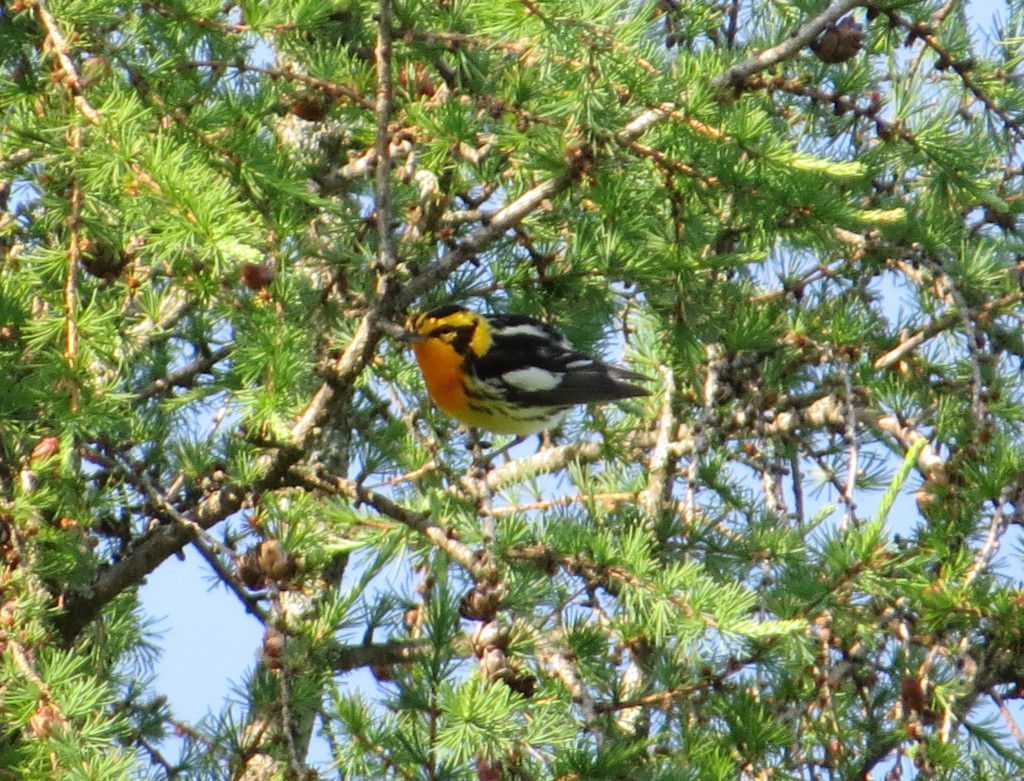
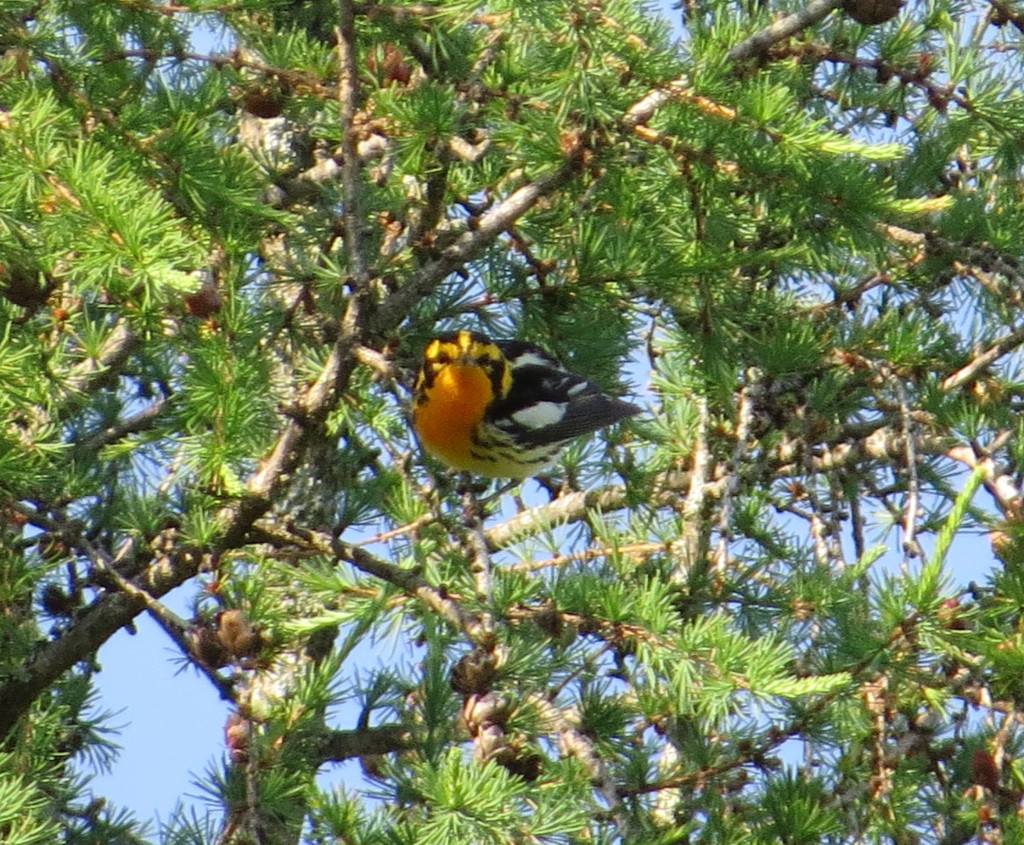
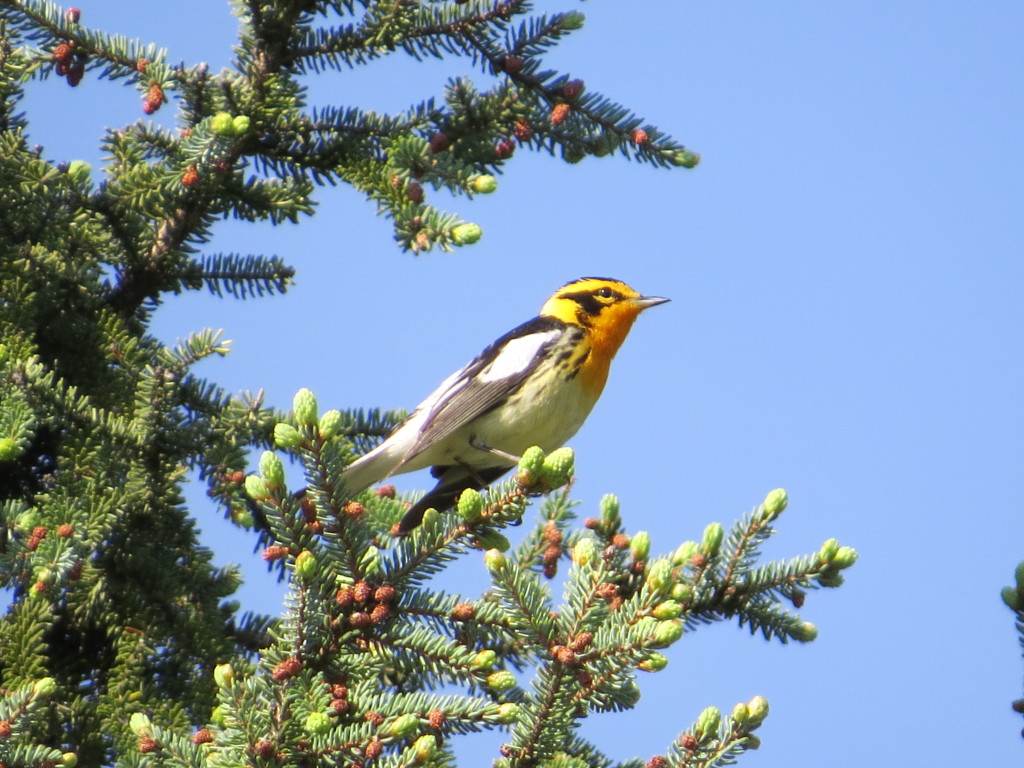
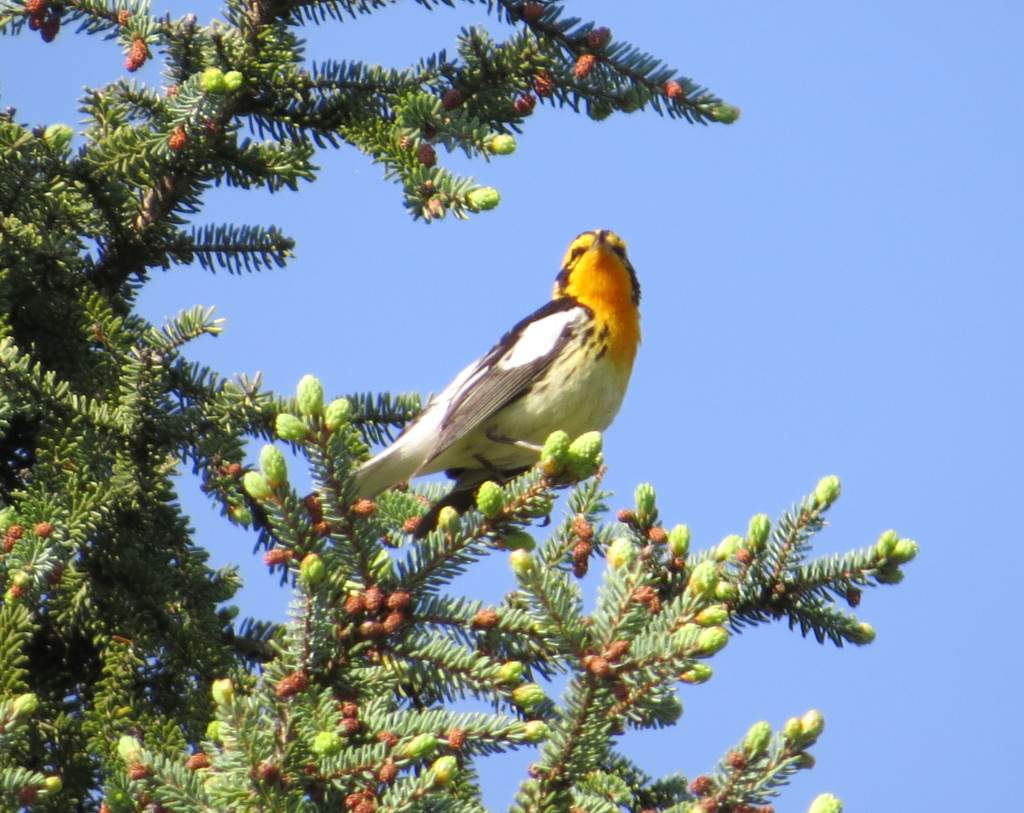
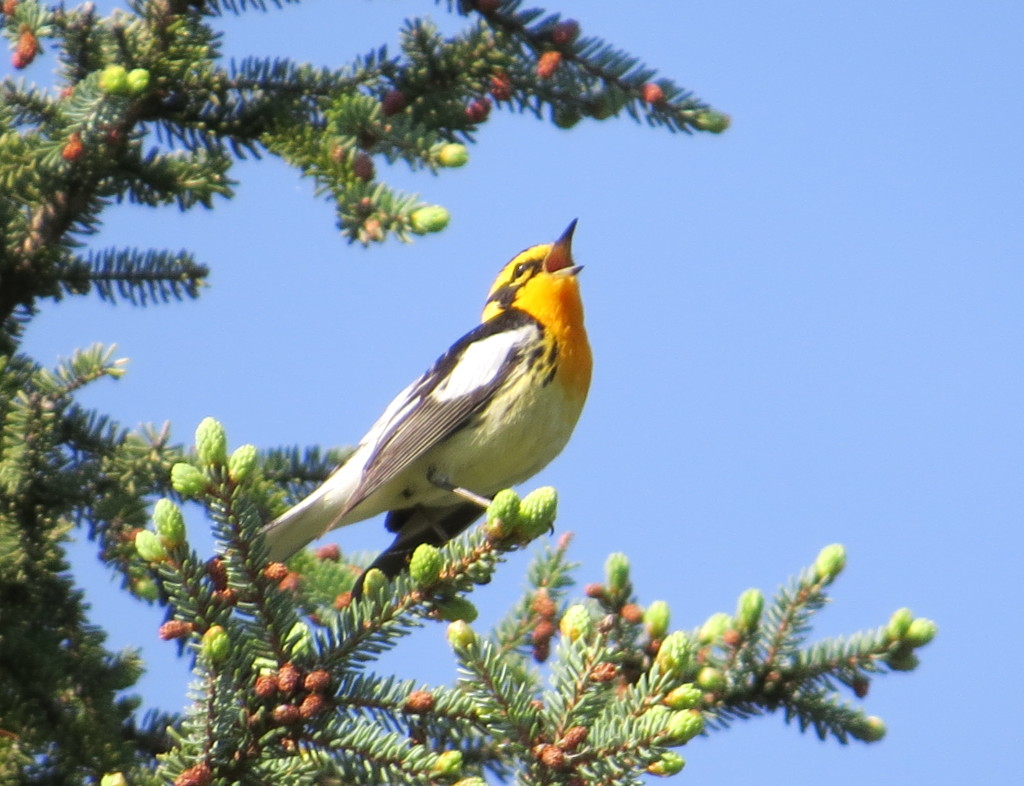
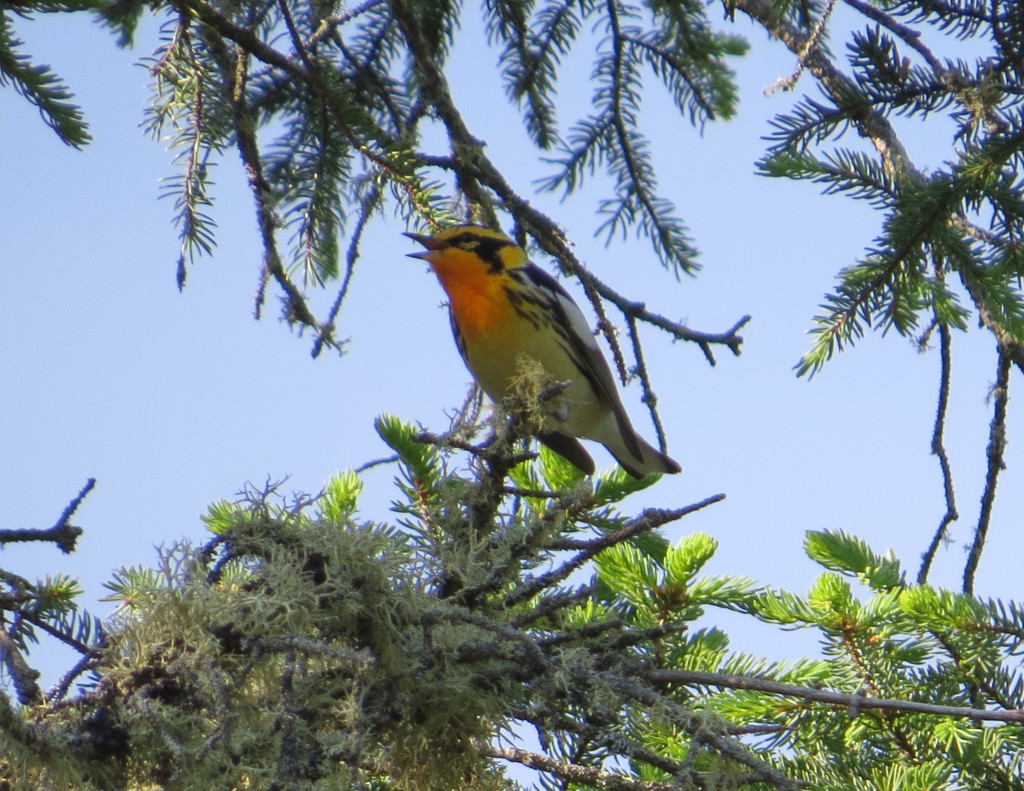
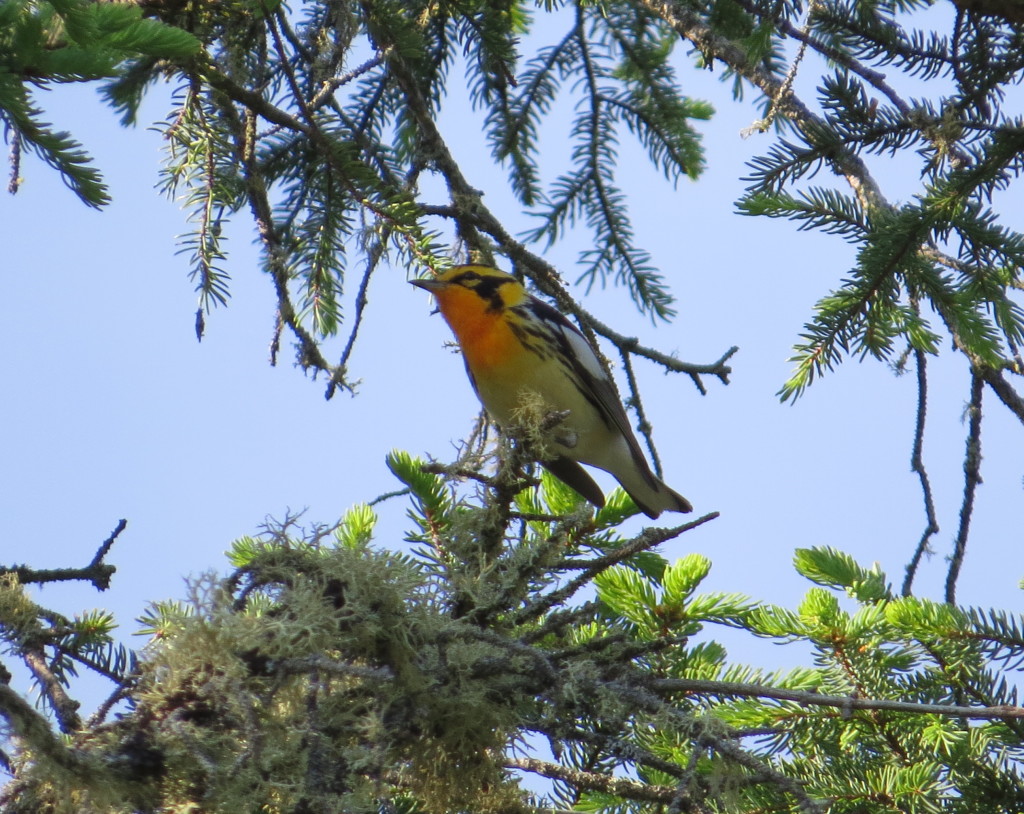
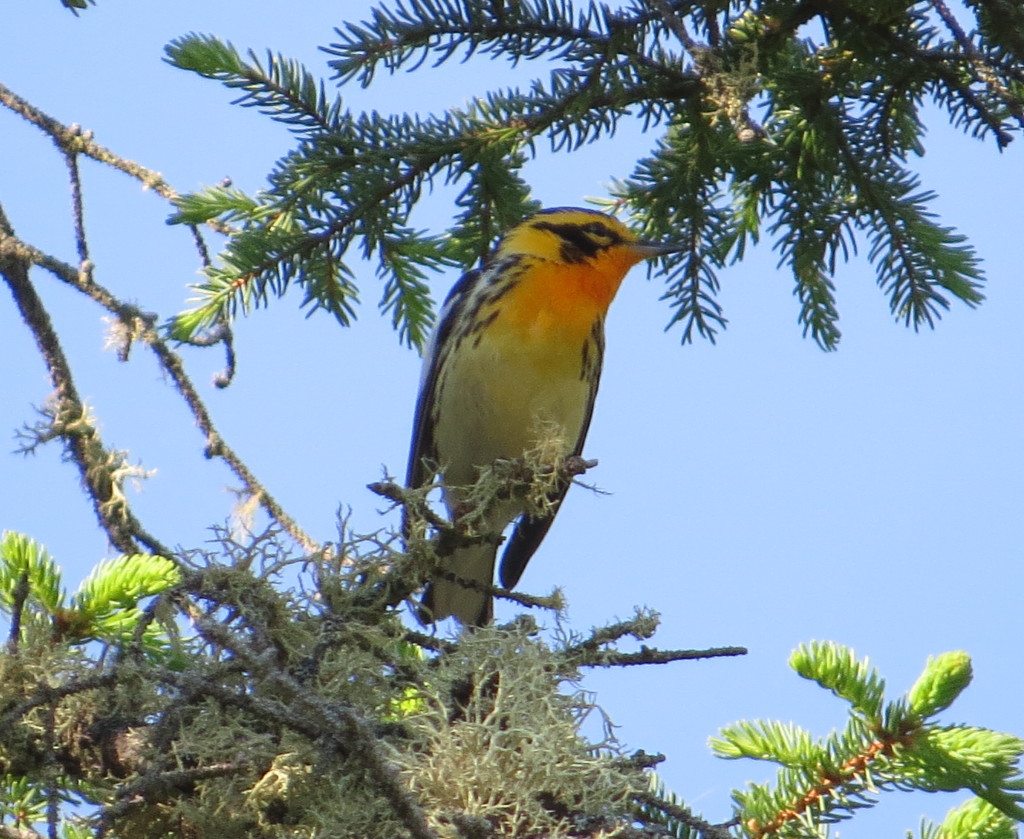
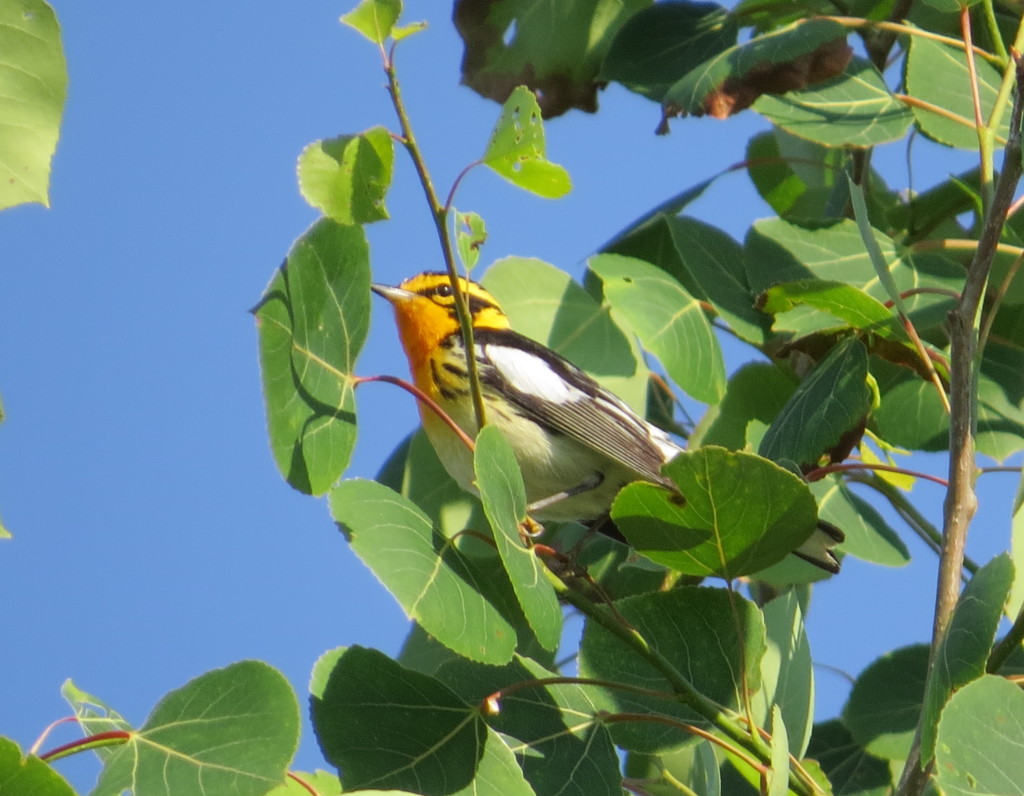
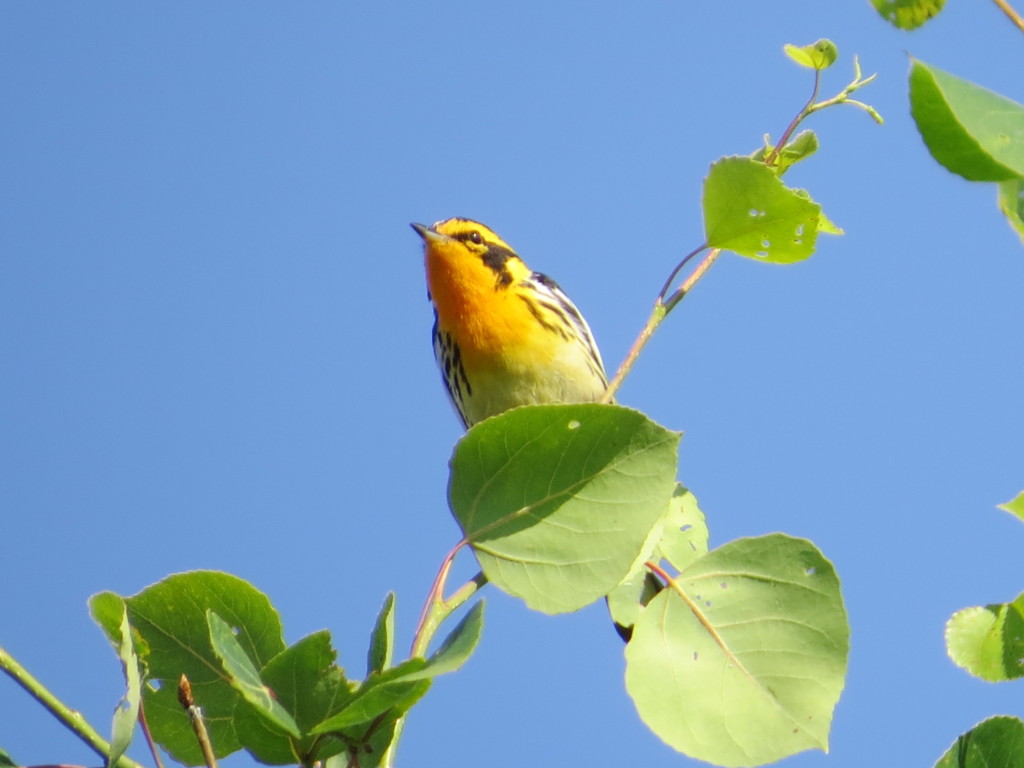
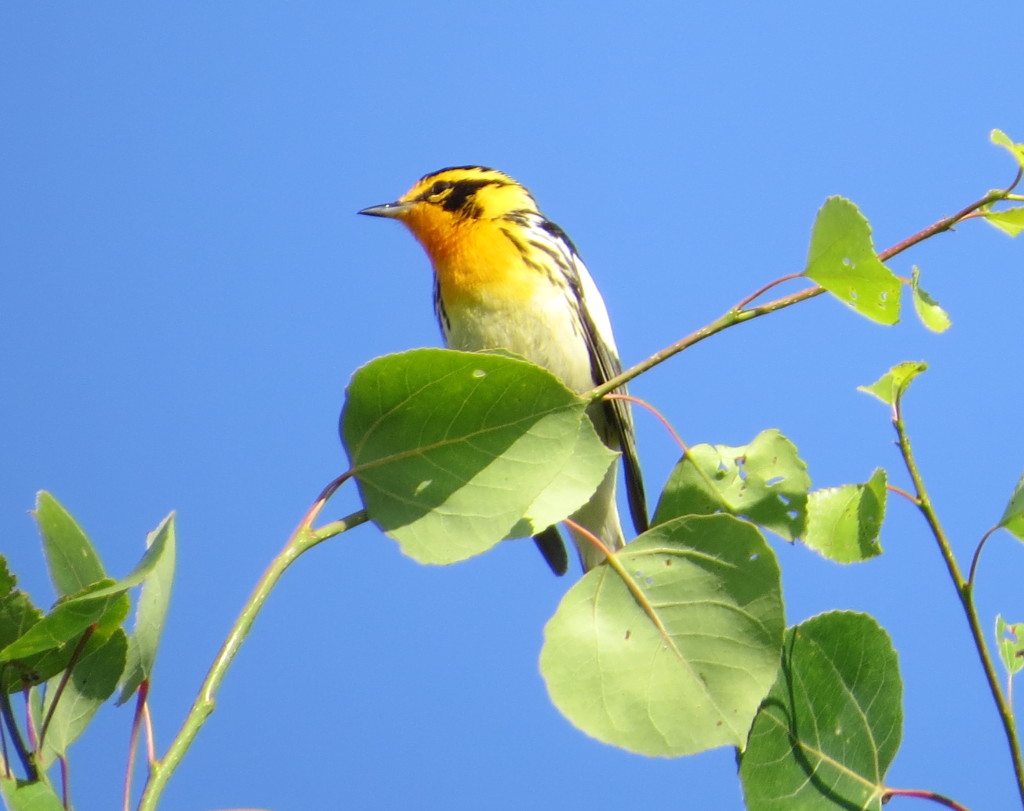
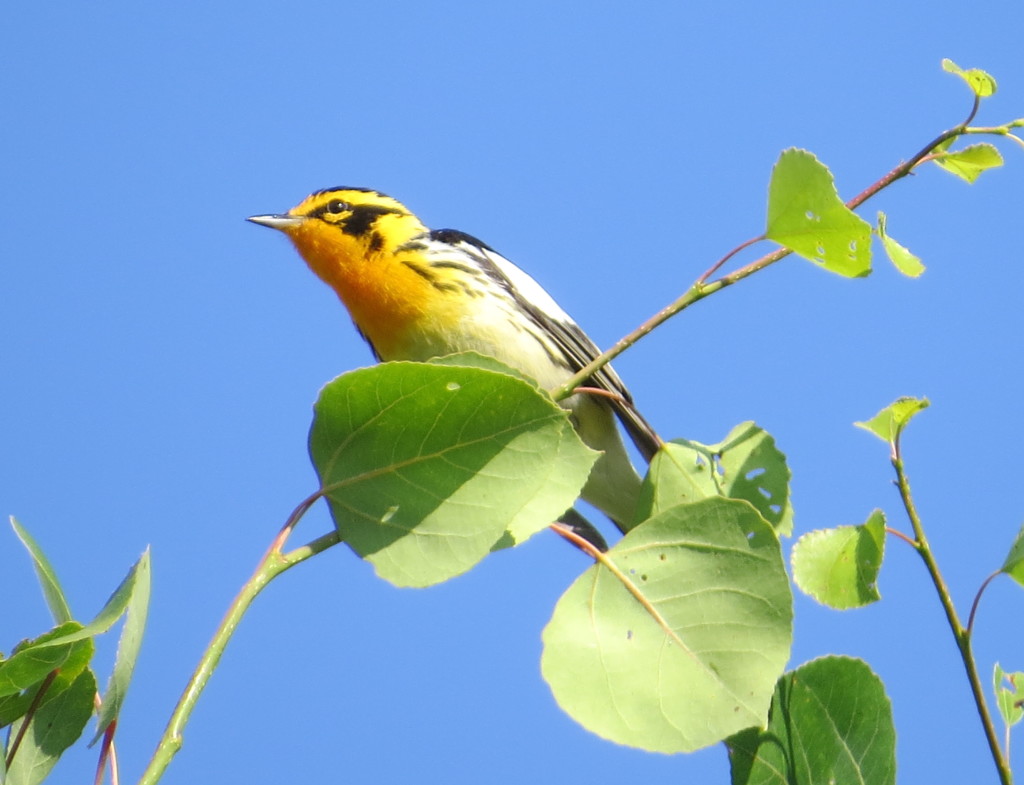
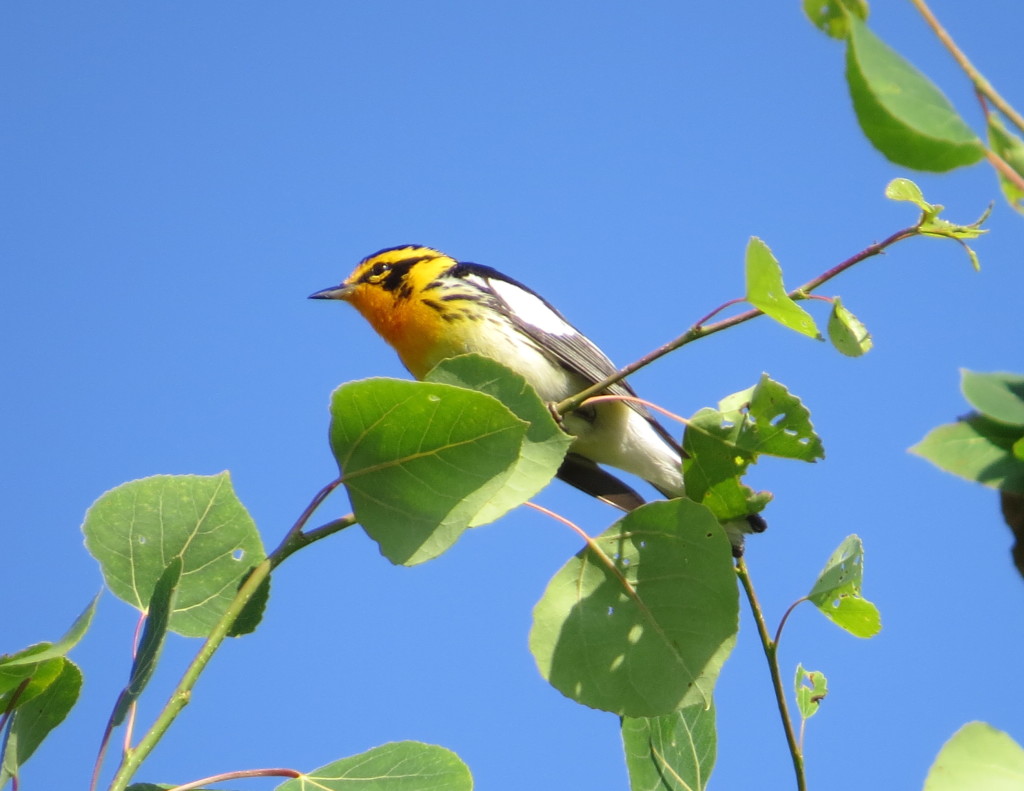
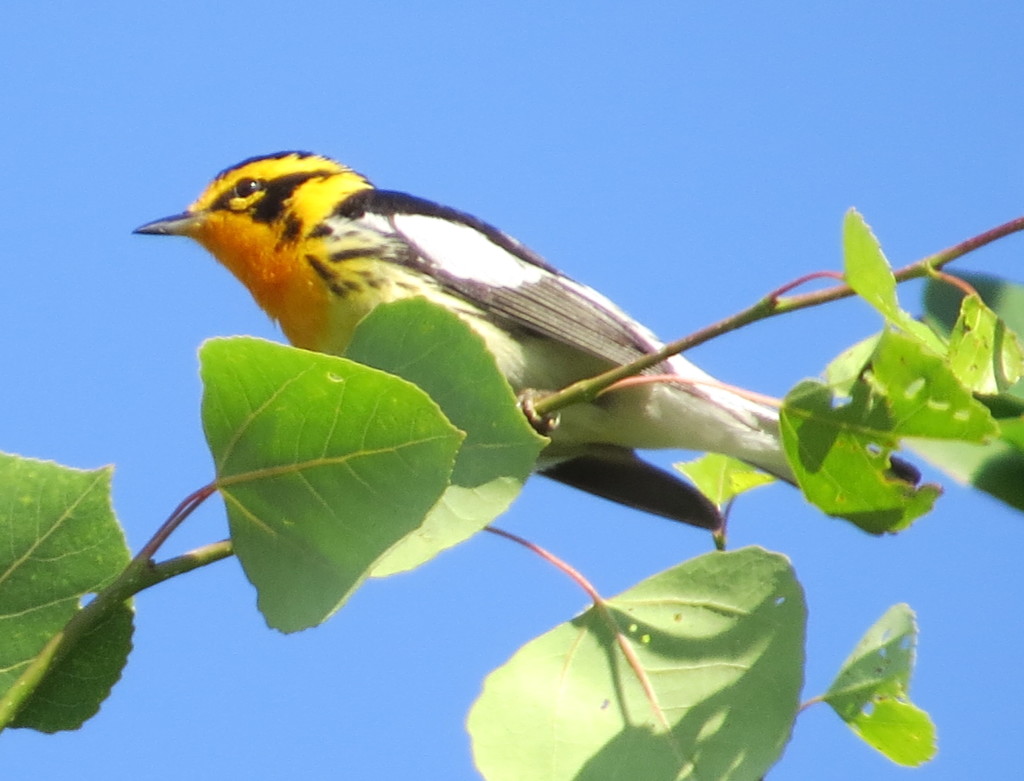 Overkill? Maybe, but my burning desire to photograph one of my top birds has finally been extinguished….until I find another one.
Overkill? Maybe, but my burning desire to photograph one of my top birds has finally been extinguished….until I find another one.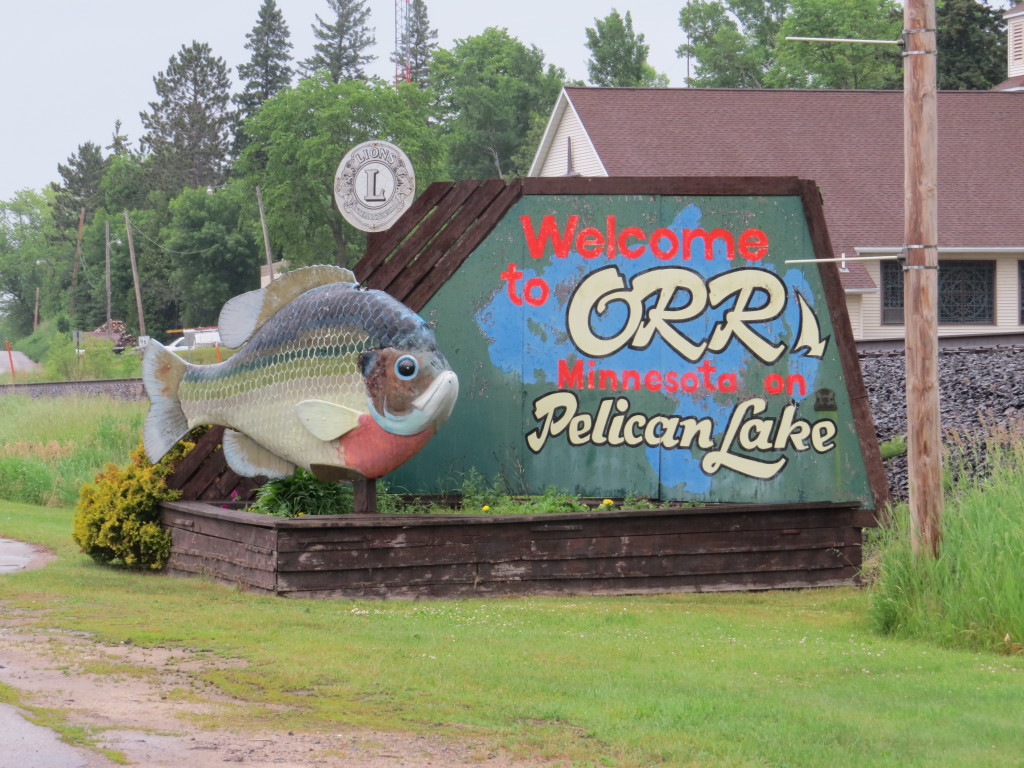 The weather forecast for the day was not good with thunderstorms all day long starting at 6 AM. As we made the half-hour trip up to Orr, the rain paid no attention to the forecast and came a little earlier. Ugh. So much for good photography conditions IF the birds were even still there. Regardless, I had come 300 miles for this. There was no turning back now.
The weather forecast for the day was not good with thunderstorms all day long starting at 6 AM. As we made the half-hour trip up to Orr, the rain paid no attention to the forecast and came a little earlier. Ugh. So much for good photography conditions IF the birds were even still there. Regardless, I had come 300 miles for this. There was no turning back now.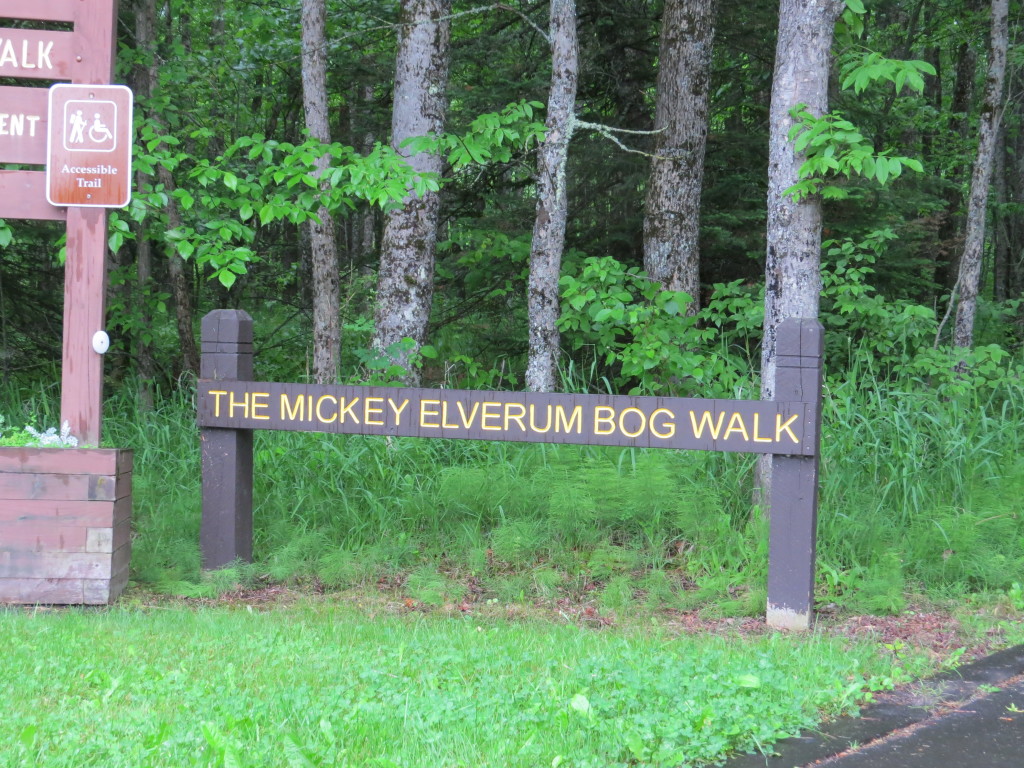 My memory’s a blur, but I think I left my dad in the dust as I raced down the Bog Walk to find the nest. Everyone said you can’t miss it; it’s right by the boardwalk and the young are making a holy racket. It turns out you can miss it…by a day.
My memory’s a blur, but I think I left my dad in the dust as I raced down the Bog Walk to find the nest. Everyone said you can’t miss it; it’s right by the boardwalk and the young are making a holy racket. It turns out you can miss it…by a day.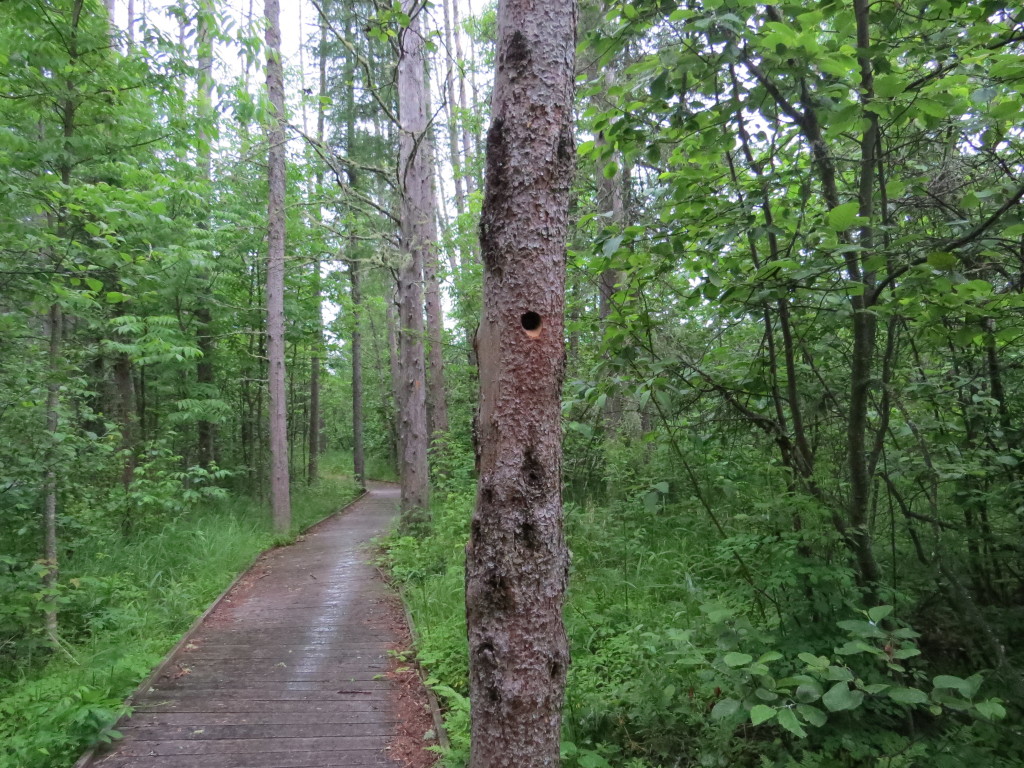 It was sickening. I knew this outcome was a very real possibility, but knowledge and feelings are very different. Adding injury to insult were hordes of mosquitoes and a steady rain. In vain I looked and listened, but those Woodpeckers weren’t speaking to me. It was a ghost town. I thought about giving up to get ahead start on licking my wounds on my 300 MILE DRIVE HOME. But then I remembered I’ve been in this spot before and have come out thriving. Coming to mind were clutch birding moments from my past like getting the Chestnut-collared Longspur last minute at Felton Prairie last year with Steve Gardner or getting a lifer Blue Grosbeak at Blue Mounds State Park two years ago with Evan in a break in a rainstorm the last morning of our trip. I sent Dad back to the car to get a reprieve from the rain and mosquitoes; I had work to do.
It was sickening. I knew this outcome was a very real possibility, but knowledge and feelings are very different. Adding injury to insult were hordes of mosquitoes and a steady rain. In vain I looked and listened, but those Woodpeckers weren’t speaking to me. It was a ghost town. I thought about giving up to get ahead start on licking my wounds on my 300 MILE DRIVE HOME. But then I remembered I’ve been in this spot before and have come out thriving. Coming to mind were clutch birding moments from my past like getting the Chestnut-collared Longspur last minute at Felton Prairie last year with Steve Gardner or getting a lifer Blue Grosbeak at Blue Mounds State Park two years ago with Evan in a break in a rainstorm the last morning of our trip. I sent Dad back to the car to get a reprieve from the rain and mosquitoes; I had work to do.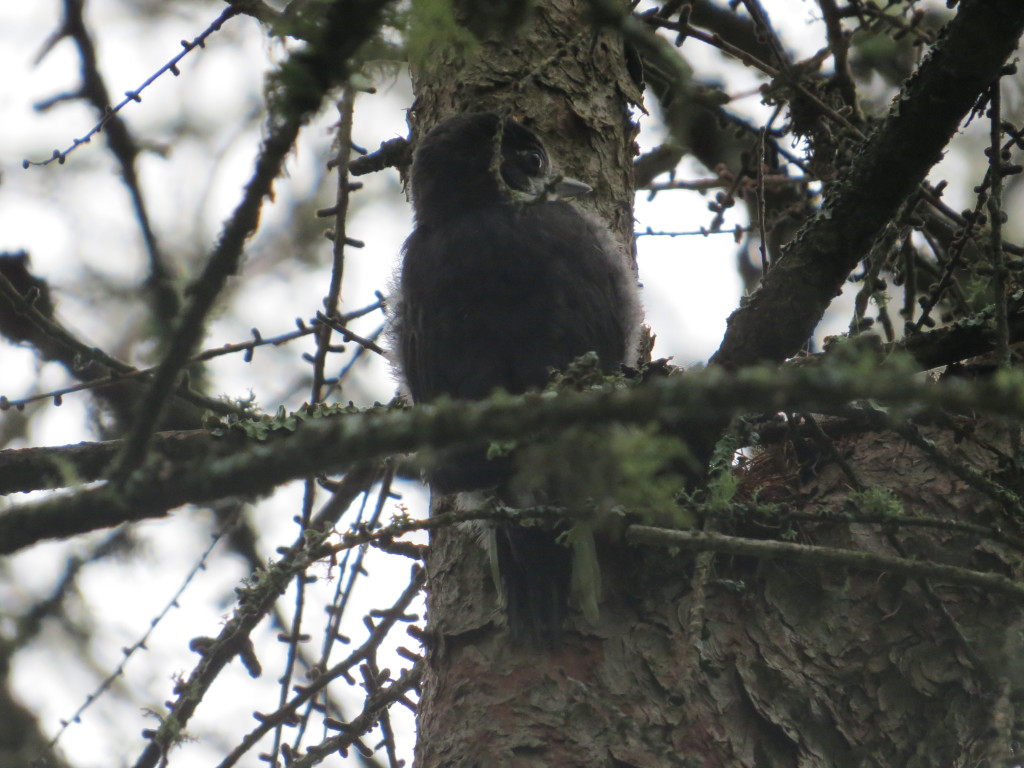 The suppressed calls I was hearing now made sense as this was a young male just learning his voice. Though not that evident in this photo, you can see the yellow spot on the forehead. Watching it long enough, I eventually saw momma come in.
The suppressed calls I was hearing now made sense as this was a young male just learning his voice. Though not that evident in this photo, you can see the yellow spot on the forehead. Watching it long enough, I eventually saw momma come in.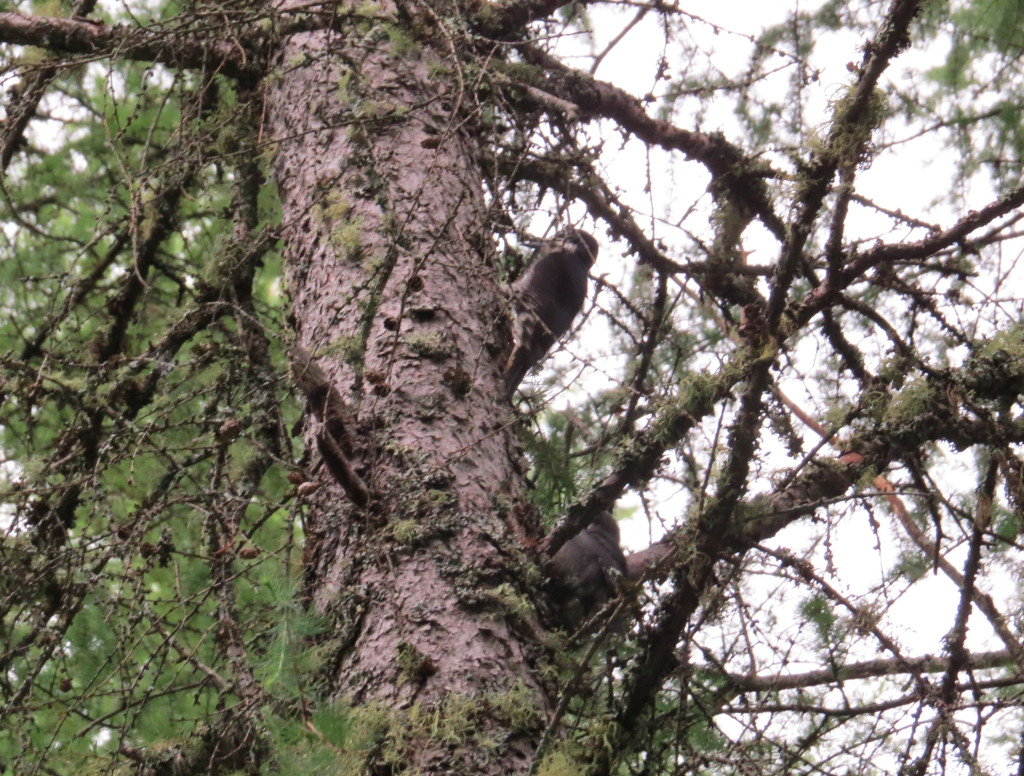
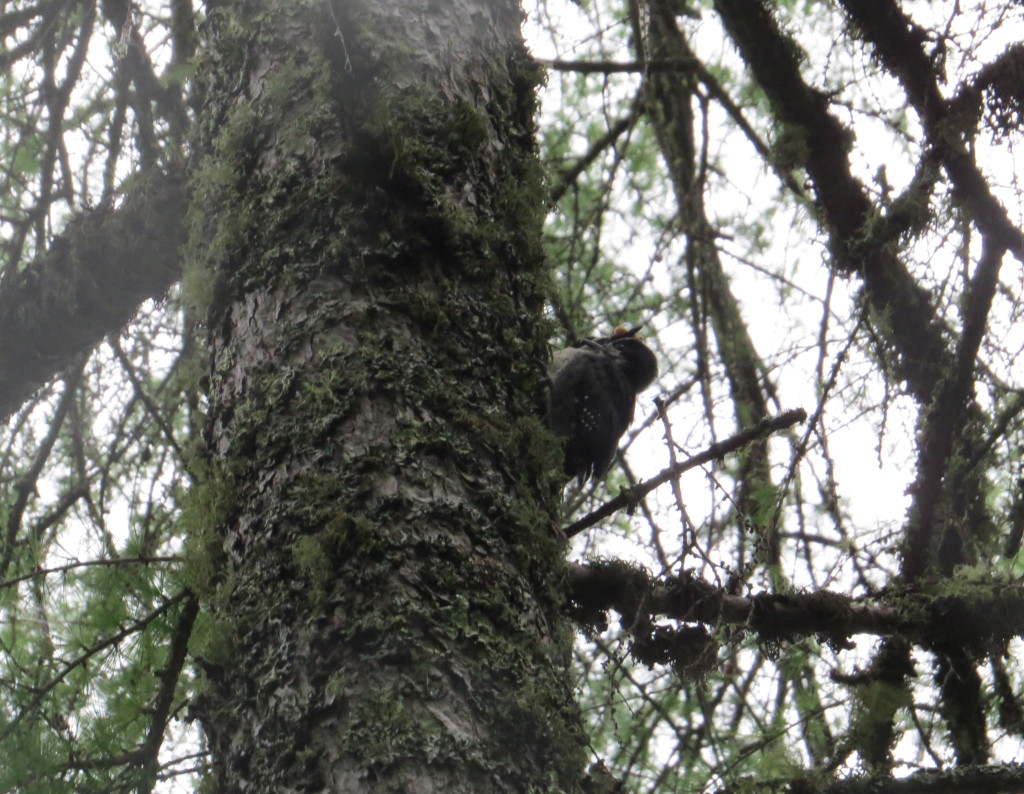
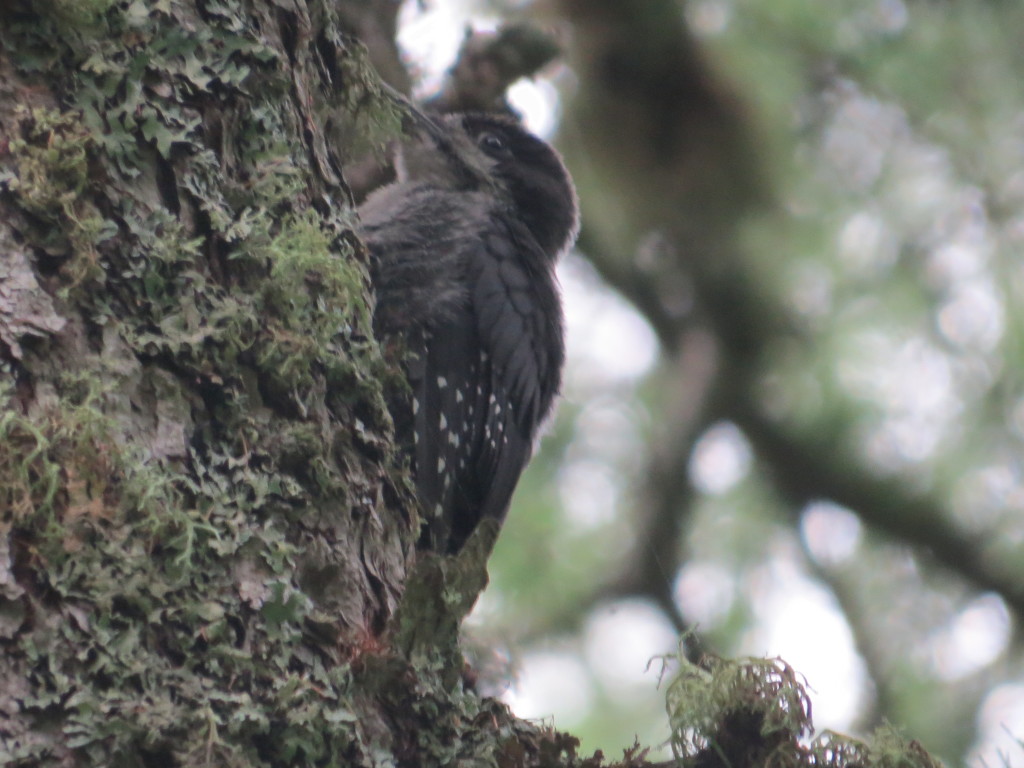 I really wanted pictures of mom and dad, though, especially dad with that golden yellow crown. Eventually momma and baby made their way to the trees by the boardwalk with me shortly and soggily behind them. Dad was able to get his life looks at this bird now too and then proceeded to be my spotter for photographing them.
I really wanted pictures of mom and dad, though, especially dad with that golden yellow crown. Eventually momma and baby made their way to the trees by the boardwalk with me shortly and soggily behind them. Dad was able to get his life looks at this bird now too and then proceeded to be my spotter for photographing them.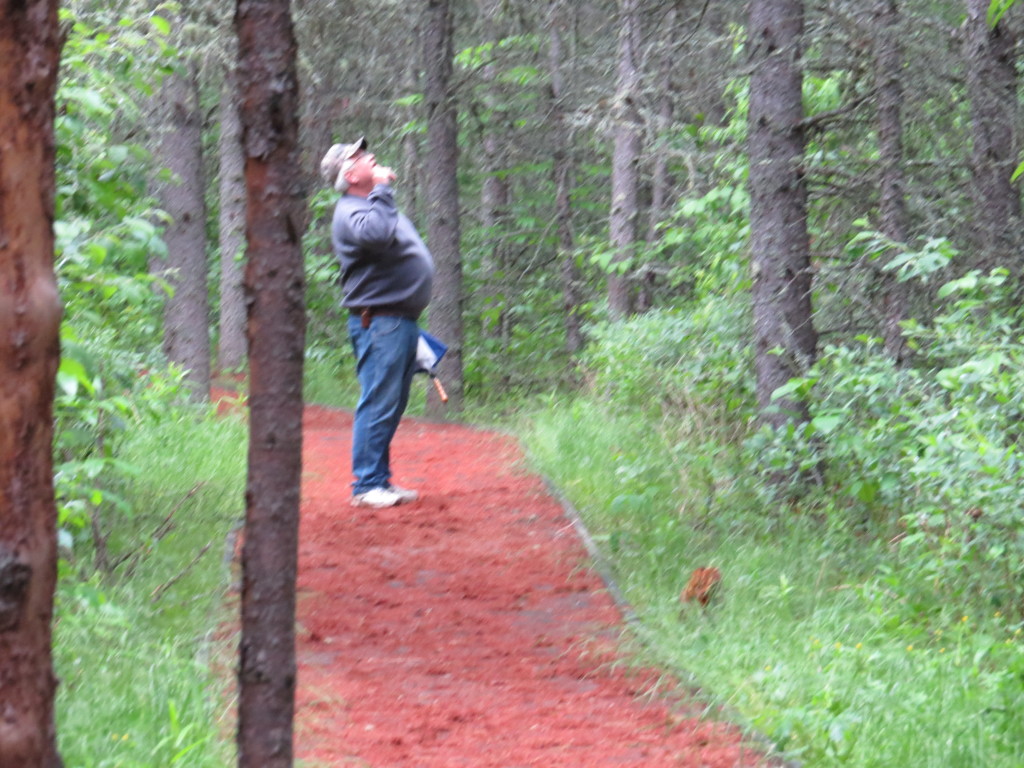 With the low light conditions that exist in a bog at dawn on a rainy day, I needed all the chances I could get in order to get any kind of decent photo. We positioned ourselves within earshot of the calling baby and sure enough, we’d get frequent looks at the mother as she would forage for food to bring back to baby.
With the low light conditions that exist in a bog at dawn on a rainy day, I needed all the chances I could get in order to get any kind of decent photo. We positioned ourselves within earshot of the calling baby and sure enough, we’d get frequent looks at the mother as she would forage for food to bring back to baby.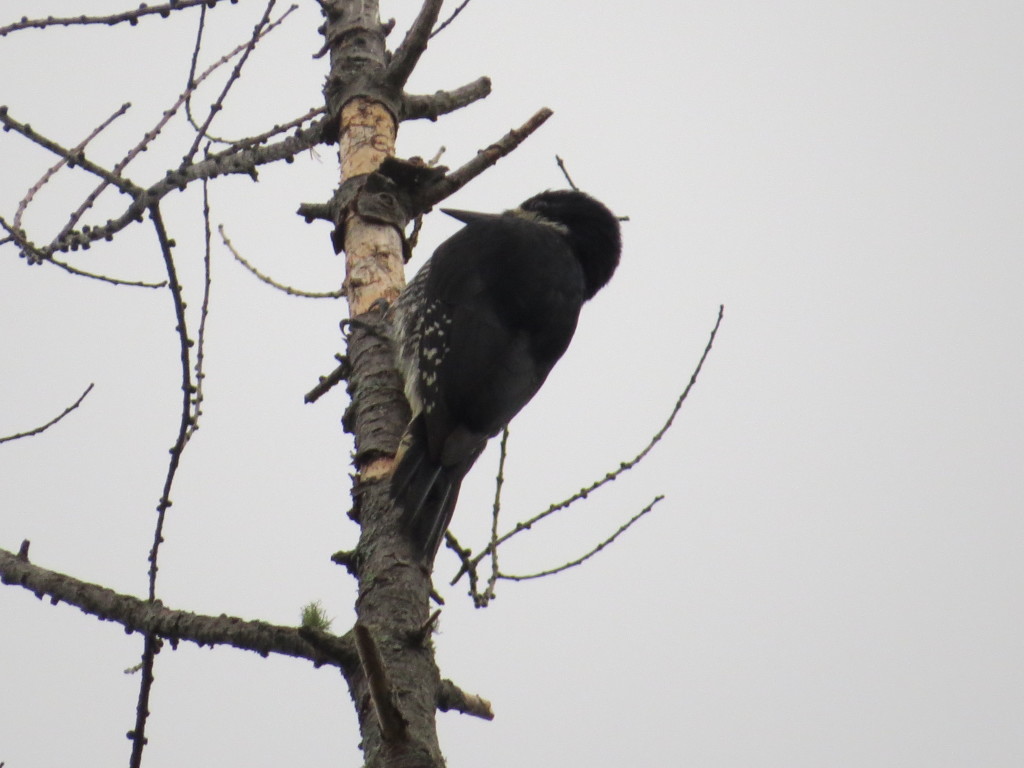
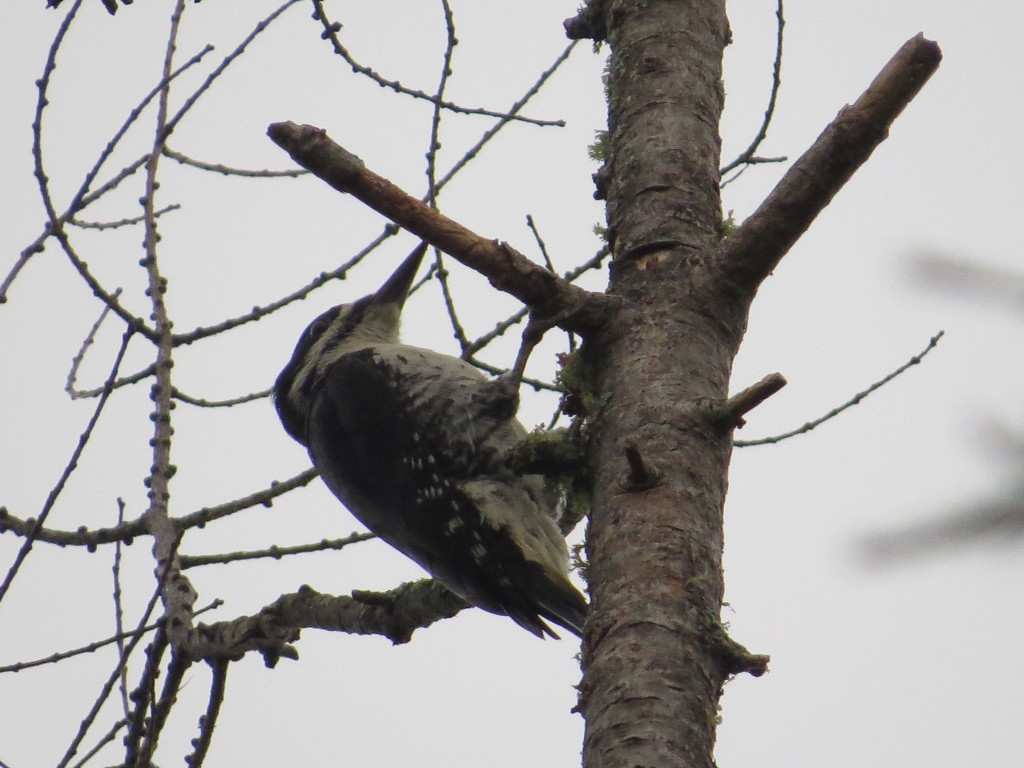 The jet-black back of these birds really stands out. You can see how it would be effective camouflage in their preferred habitat of recently burned forests.
The jet-black back of these birds really stands out. You can see how it would be effective camouflage in their preferred habitat of recently burned forests.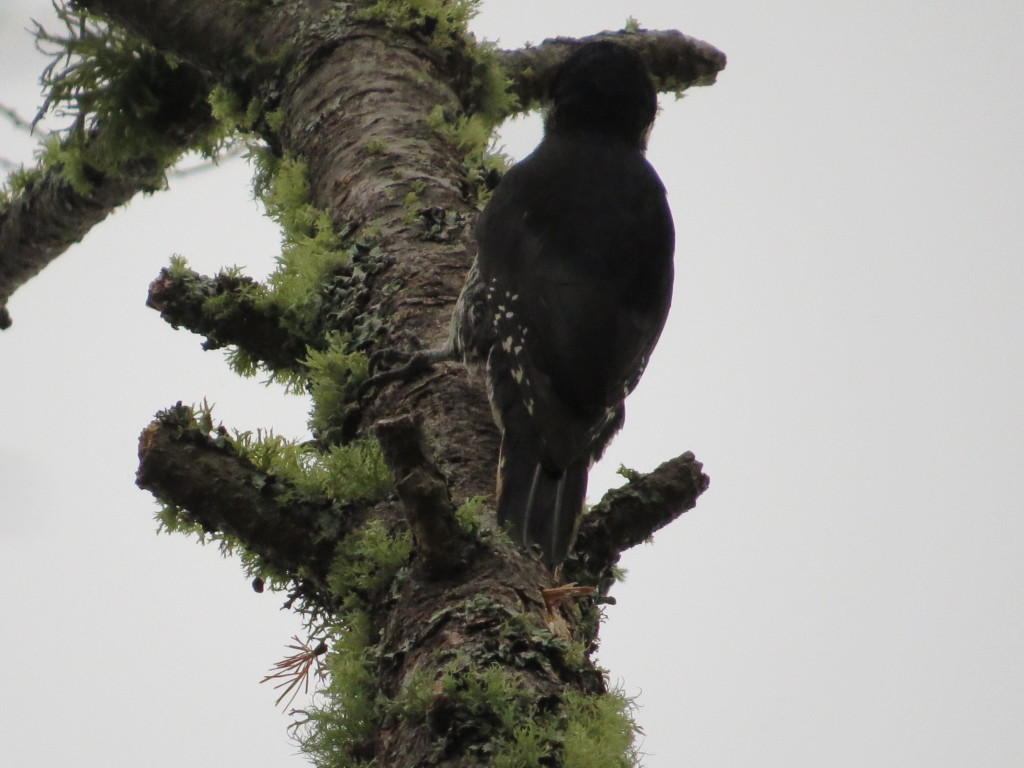
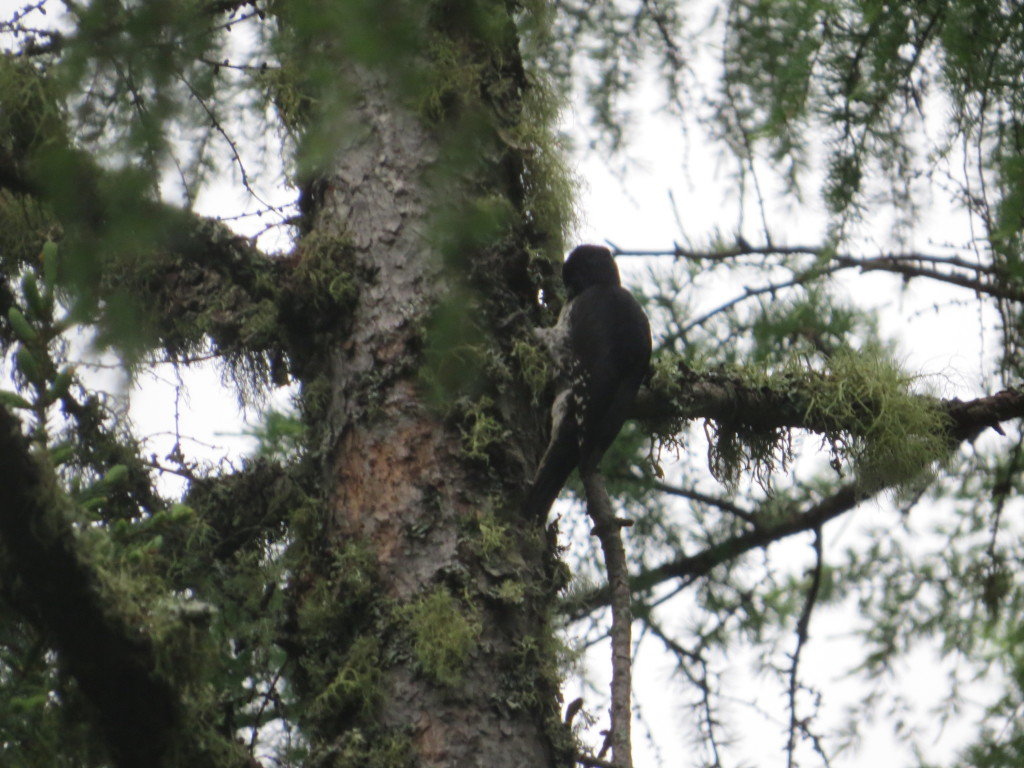
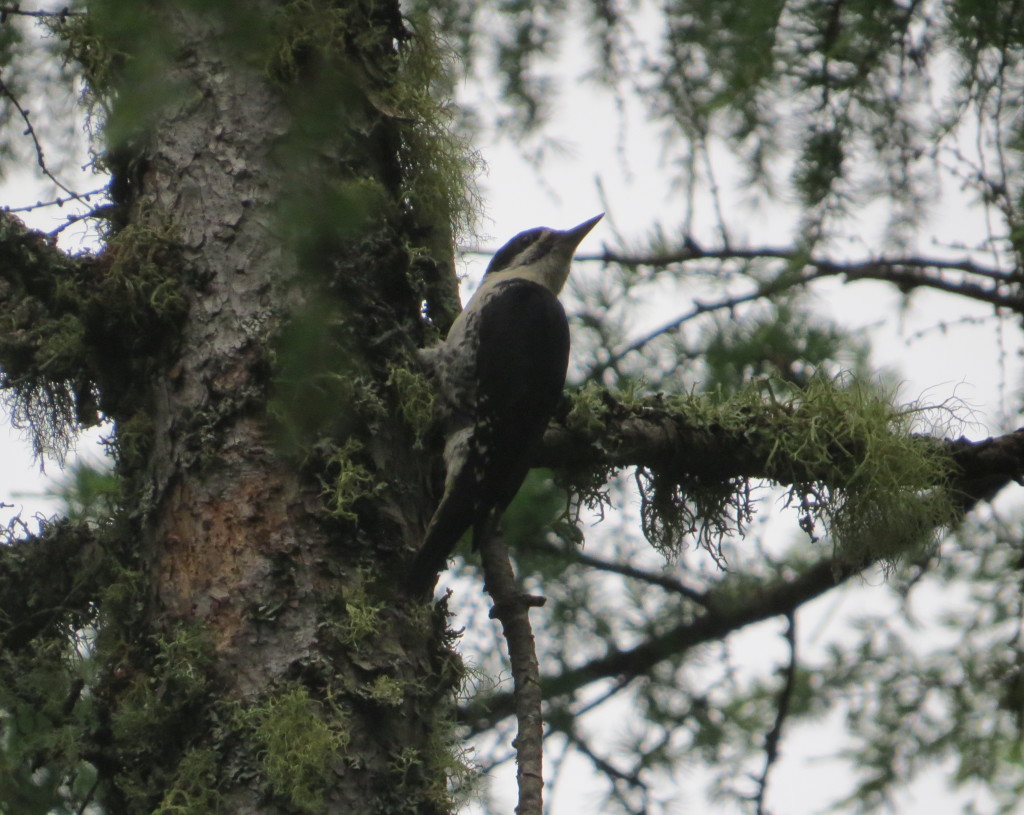
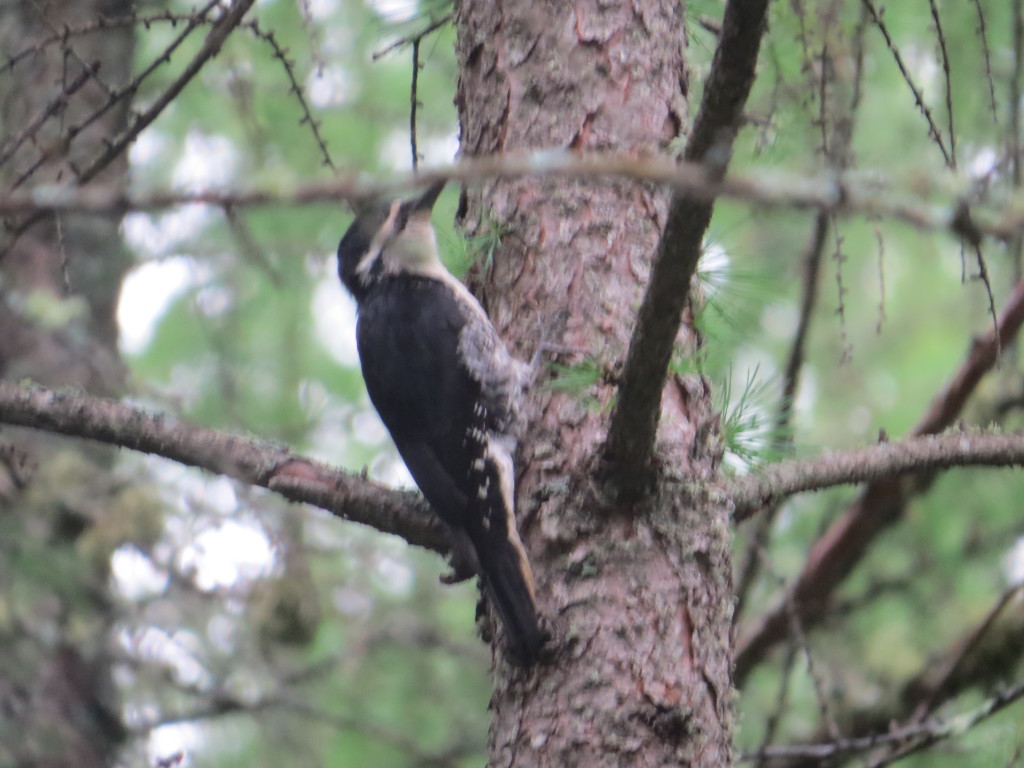
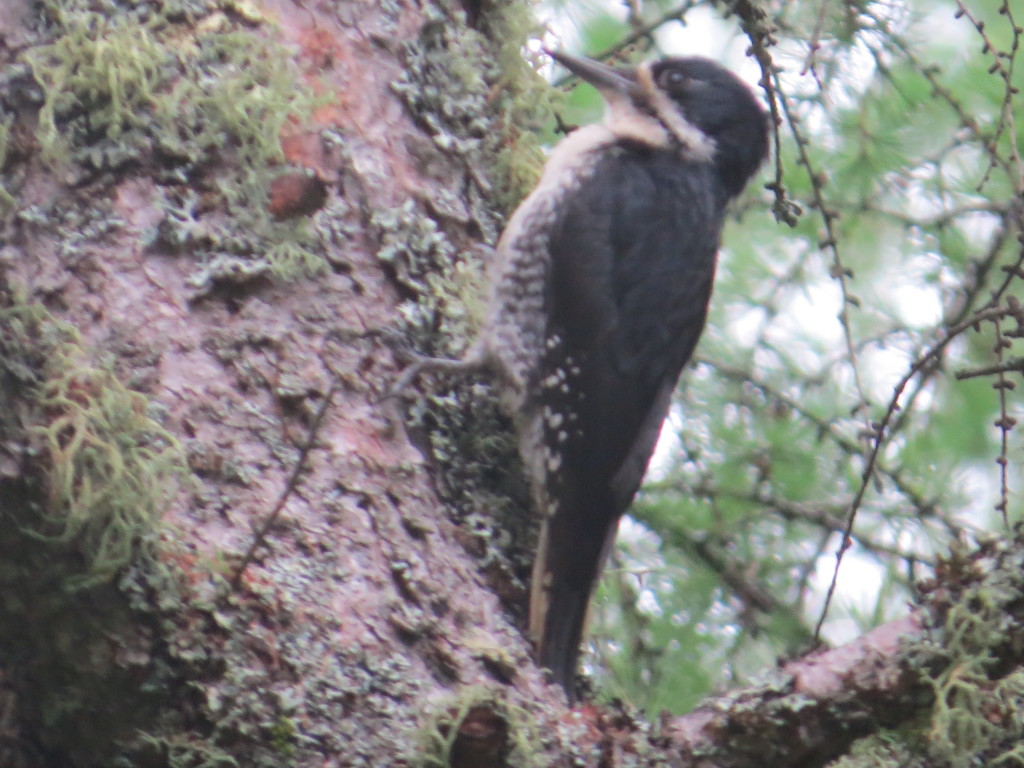 Despite the poor conditions for photography, getting this much-wanted lifer in this way in this place with this company was pretty special. After all, we’d all be stuck on some metaphorical tree without the guidance of a parent. Mine even called me out of the literal trees and gave me dry socks for the ride home.
Despite the poor conditions for photography, getting this much-wanted lifer in this way in this place with this company was pretty special. After all, we’d all be stuck on some metaphorical tree without the guidance of a parent. Mine even called me out of the literal trees and gave me dry socks for the ride home.